
In general, "it was an interesting format." Only in my retroreality do I try to avoid the past tense. You can get a stack of discs, a decent turntable from the mid-nineties, and restore the experience of years ago. So I did. This article is the result of practical experiments with laser discs in 2020. Was it worth the effort and expense? In relation to modern 4K releases, LD is not much different from VHS. For all the futility of my retro hobby, there is one important argument in favor of laser discs: like music on vinyl, films on LD are a pleasure to collect. Large 12-inch pancakes in colorful glossy envelopes. Rare editions in leather binding and with a book. Under the cut: features of CLV and CAV, PAL and NTSC, a practical demonstration of laser rot and a little Star Wars, in which Han shot first...
I keep a diary of a collector of old pieces of iron in Telegram .
The shortest history of the laser disc
Films on laser video discs, and their players, went on sale at the end of 1978: two years after the launch of VHS videotapes and four years before the release of the first really popular optical media, the CD. The last US release on laserdisc went on sale in late 2000. The last release in Japan, where the format (like many others) took root much better, was released at the end of 2001. The physical parameters of a laser disc are similar to a plate: a diameter of 12 inches (there were also seven-inch and even five-inch versions), but a little more thick.
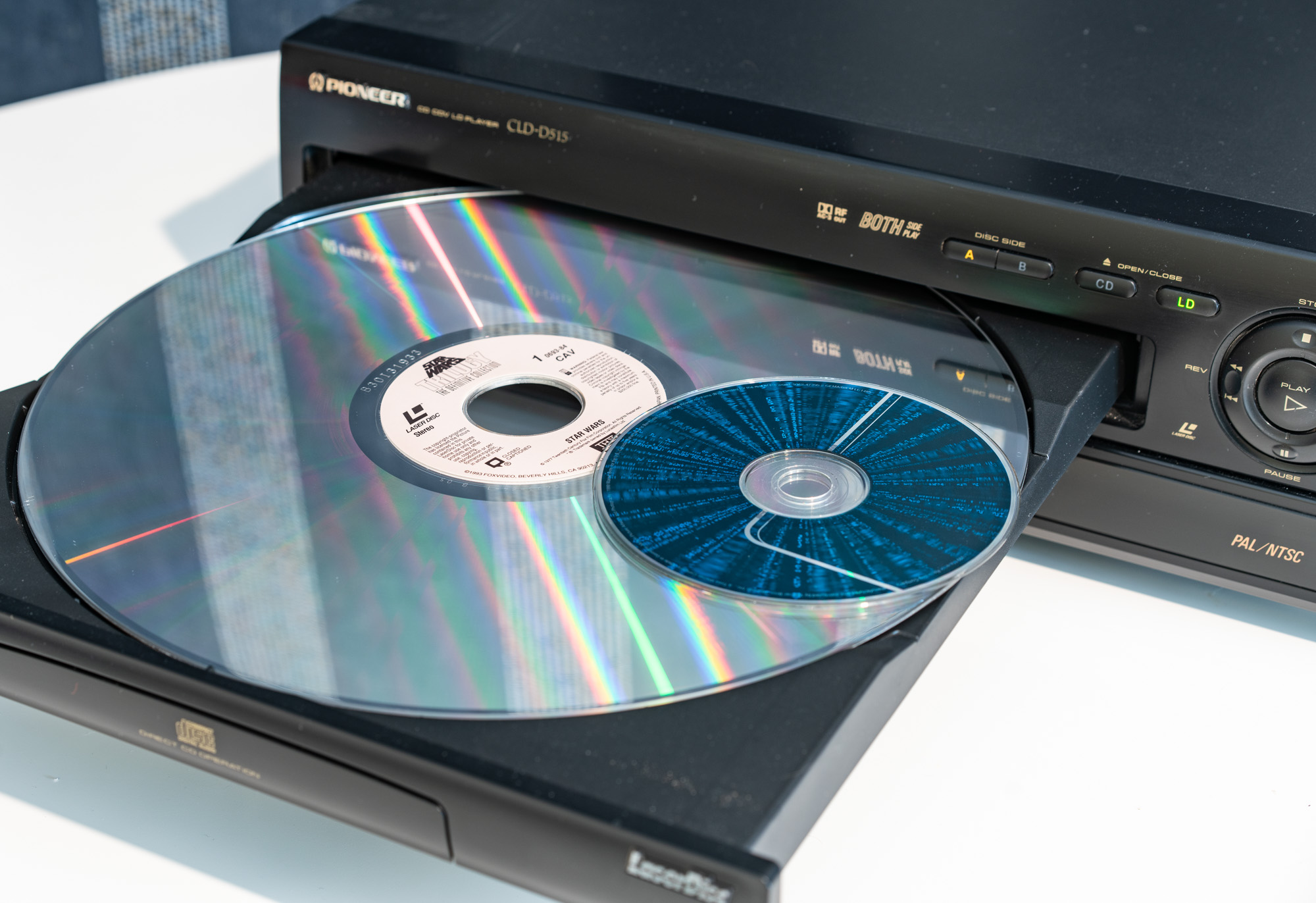
In terms of technology, LD is a distant relative of CD, in the sense that a laser with the same wavelength is also used to read data. But a laser disc is not a digital medium, but an analog one. On discs recorded according to the CAV standard, you can see right on the surface where you switch between frames:

On one side of the disc, at best, an hour of video fits. The vast majority of films are recorded on both sides of the disc, that is, each LD is essentially two "pancakes" glued together. Longer films had to be released on two or more discs. The laser disc spins at up to 1800 (PAL) or 1500 (NTSC) rpm. Considering that the disc weighs a lot (~ 300-400 grams), even with a slight curvature, viewing is accompanied by a distinct hum.
Like a videotape, a composite video signal is stored on a laser disc . The main difference from VHS is the higher bandwidth, which in the analog world determines the resolution and other quality characteristics of the final image.

Picture from hereshows how video and audio signals are distributed over frequencies. Video data is allocated a bandwidth of six megahertz, twice that of VHS. In fact, the bandwidth is wider: there is room for the sound, while in VHS it was recorded separately. This bandwidth margin made it possible to immediately release films with a stereo track. Since 1985, LD has been producing films with digital stereo sound (and the same parameters as CDs). In the nineties, some releases used multichannel audio tracks in AC-3 (Dolby Digital) and DTS formats - 5.1 sound first appeared not on DVD, but on laser discs. The horizontal image resolution is 440 TV lines on LD 425, compared to ~ 240 on videotape. In other words, until 1997, the laser disc was the highest quality consumer video media, head and shoulders above VHS.You can recall the higher quality S-VHS format, but almost no commercial films were released on it.
The reasons for the failure of the laser disc with respect to videotapes are well described in the video above. Both VHS, Betamax, and laser discs appeared at about the same time: and for the first time, with a difference of a couple of years, it was allowed to watch movies at home, at any time. It was no longer necessary to follow the TV program. Videotapes (of any standard) had one major advantage: the ability to record. Buying films in a store - the consumer still had to get accustomed to this. Recording a TV series or a football match to watch "when convenient" has become a key argument in favor of videotape. In theory, stamping laser discs is easier than replicating VHS, but in practice this advantage has not been realized at a lower price, due to the small volume of sales throughout the life of the format. I don't think the laser disc is a failurebut he also did not become mainstream, he did not even get close to it. The appearance of the DVD on sale put an end to the format, when even film fans turned away from it: digital video on a five-inch medium was both of better quality and more convenient to use.
Laser disc in 2020
For a long time I didn’t want to add a laser disc to the list of formats in my retro cabinet until I had an opportunity to buy inexpensively both a working player and a decent collection of laser discs of one and a half hundred titles. Over the summer I bought a couple more collections: this is a cheap way in terms of the cost of each disc. But not very high quality. For example, I now have ten copies of the Star Trek movies and three copies of the Hollywood masterpiece, Karate Kid II.
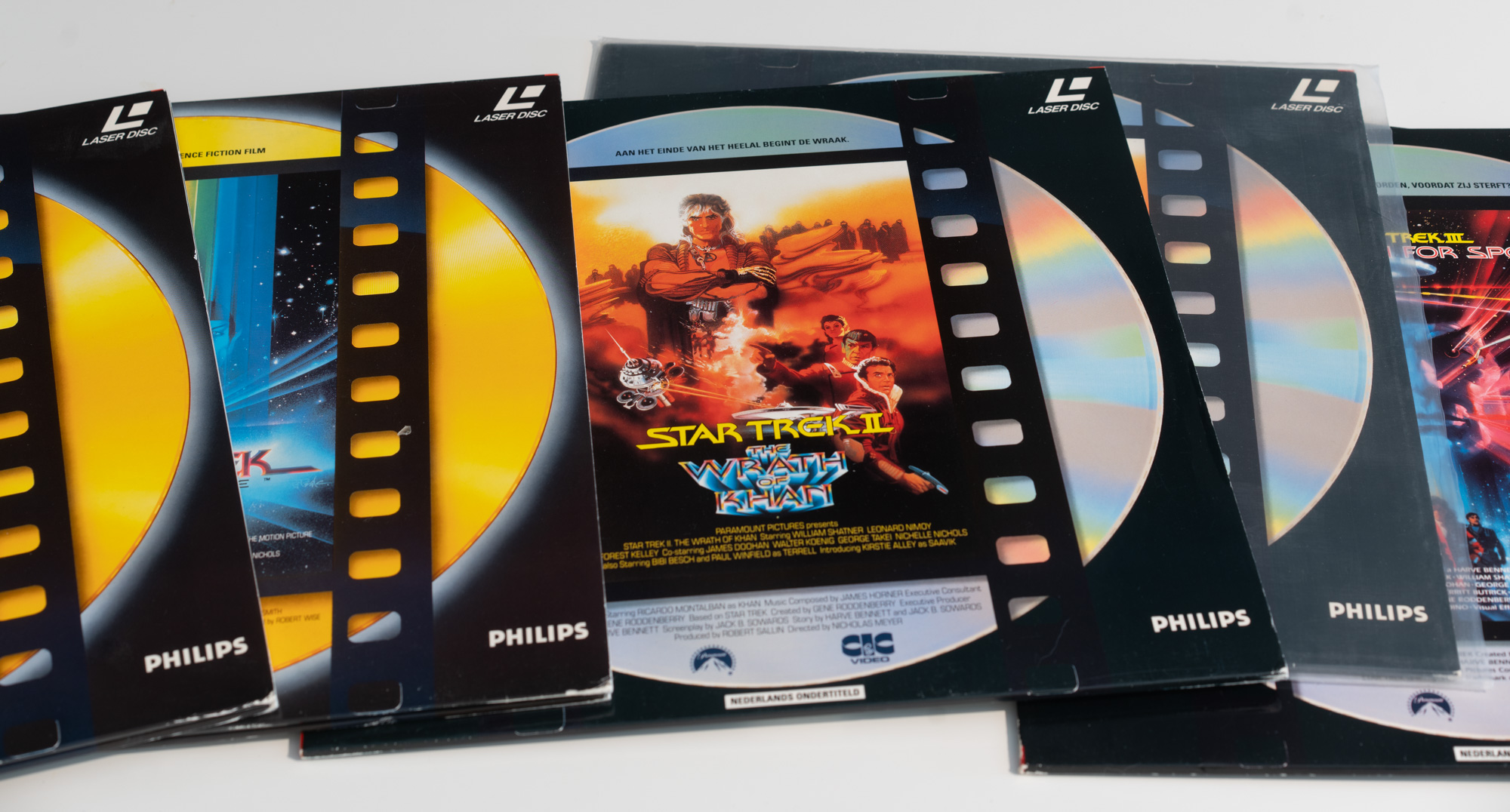
Let's take a look at the turntable:
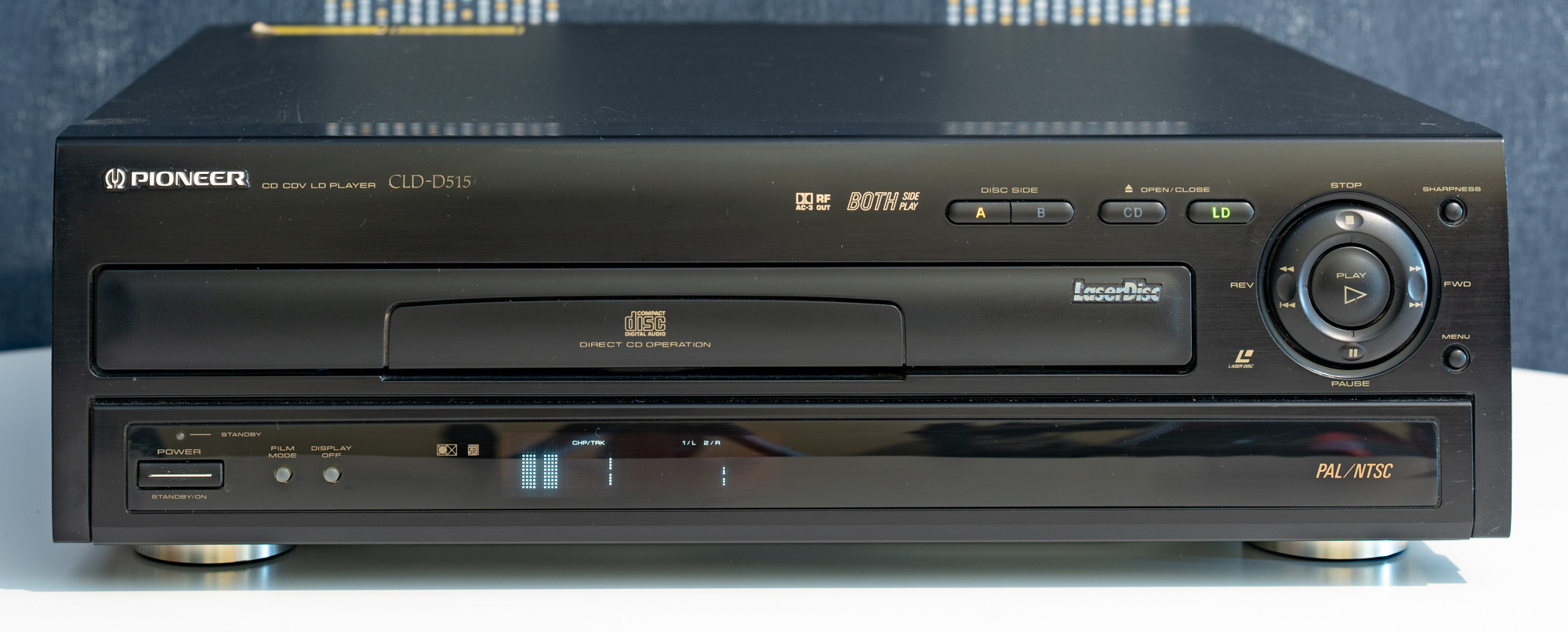
This is the Pioneer CLD-D515, a mid-range model from 1998. There were more sophisticated devices, but rather not in terms of features, but in terms of the quality of analog signal processing: in the pre-digital era, this was important. From the point of view of an LD neophyte, everything you need is here:
- . ( ) .
- . AC-3, , .
- PAL NTSC. VHS . , : ( NTSC). ( — PAL), NTS .
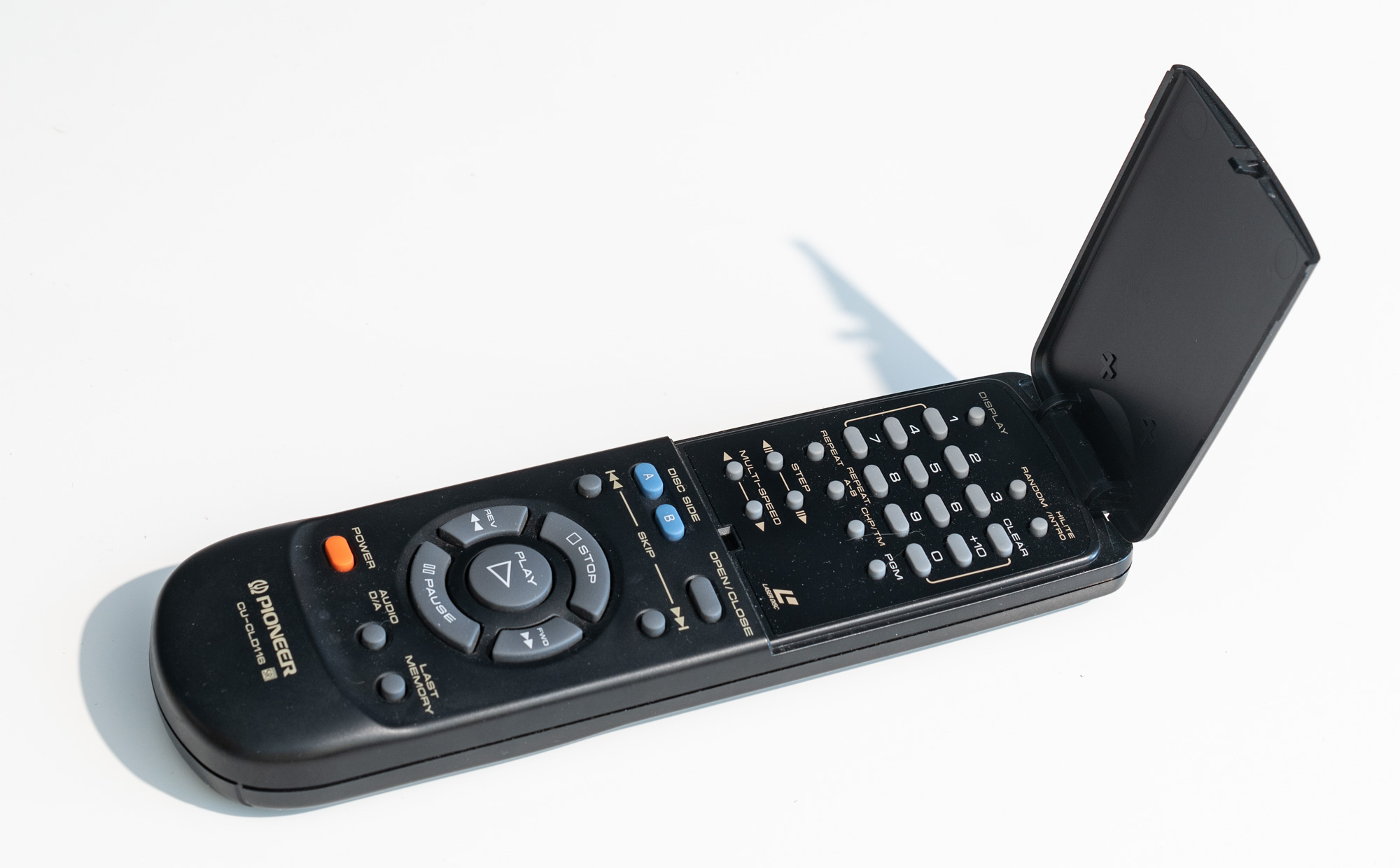
A remote with a "secret" section allows you to use the main features of the format.
Random access to any chapter on a laser disc. For CAV editions - viewing individual frames in pause mode. Switching between audio tracks - in some editions a director's commentary or translation was recorded on an analog track. The Last Memory button allows you to resume viewing where you last pressed the Stop button. It is possible to play a fragment in a circle. In general, everything that a random access medium allows, as opposed to a videotape, allows.
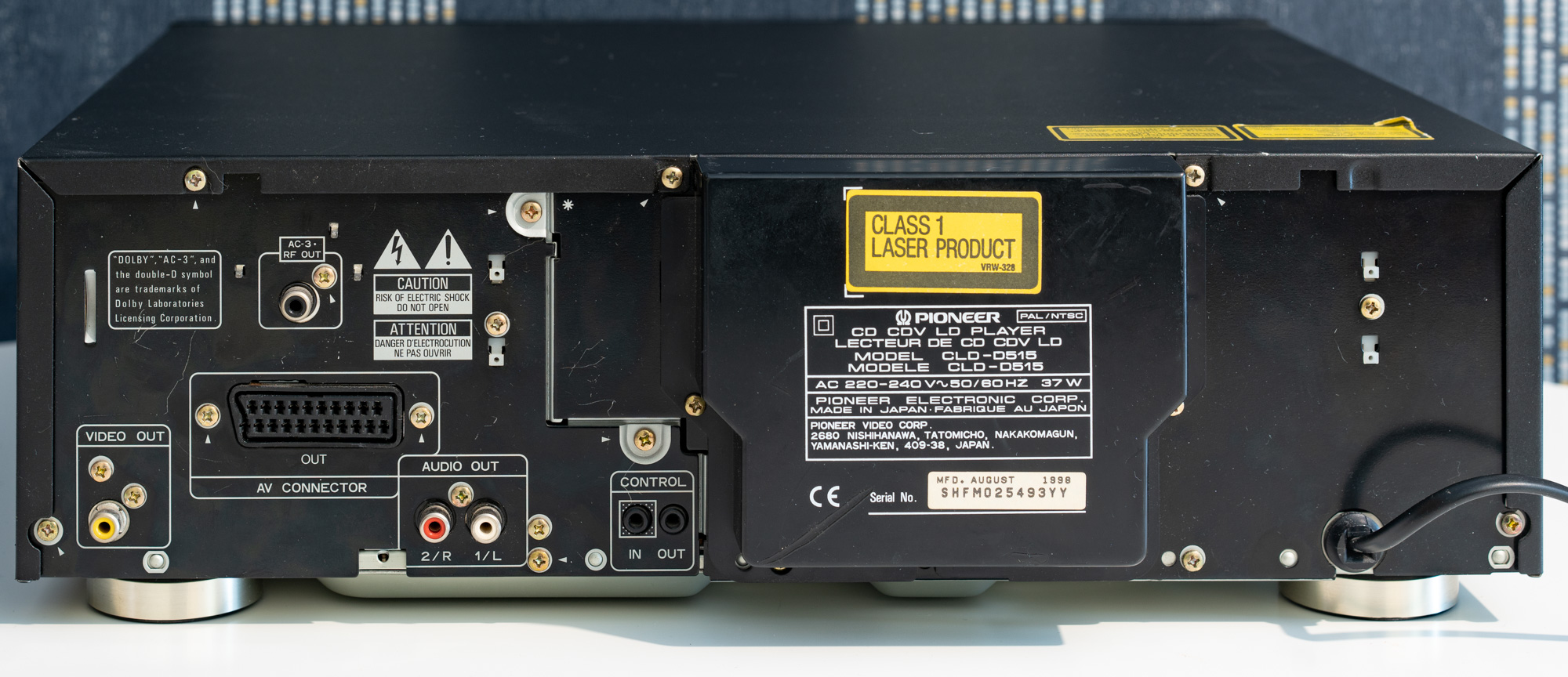
The back is a traditional set of outputs. The player is connected to an old CRT TV with a single SCART cable, the ancestor of the modern universal HDMI interface. The protruding part is necessary for the operation of the reverse mechanism.
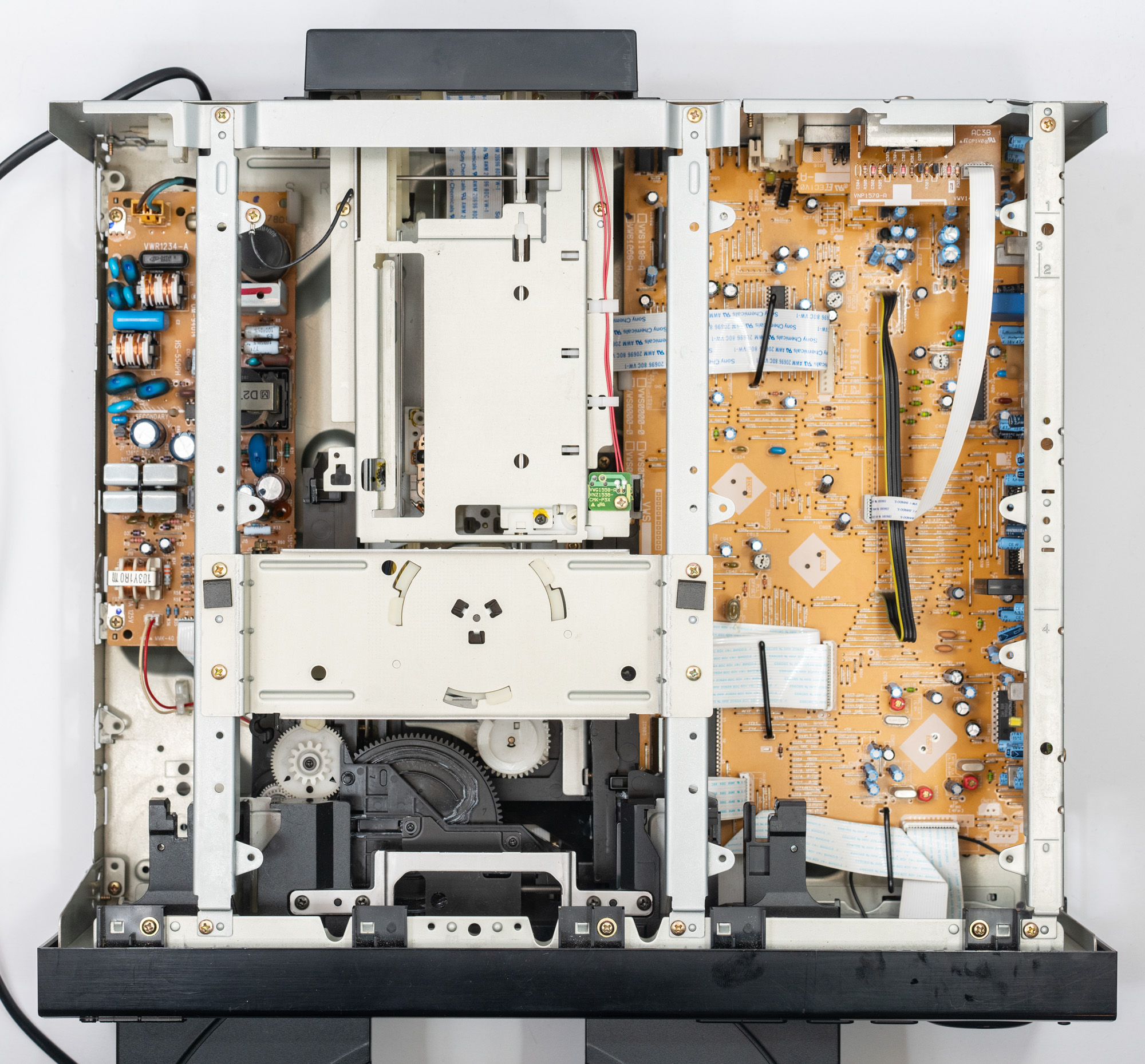
The player turned out to be completely working, it only required a preventive change of the drive belt, which is responsible for the movement of the tray.
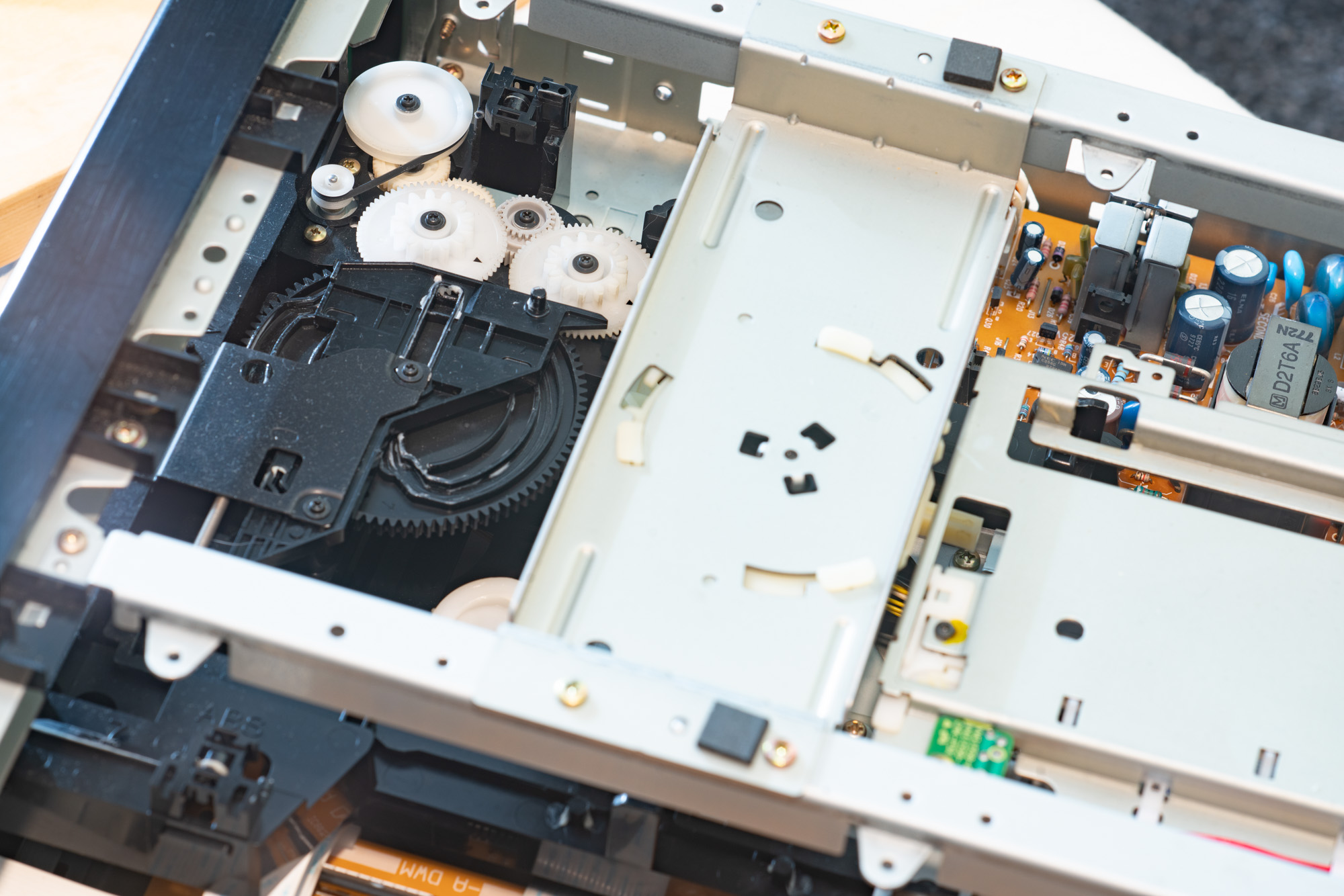
An additional feature of this model is the ability to play regular CDs. The latest players supported three formats at once: LD, CD and DVD.
A characteristic feature of the laser disc experience: switching to the other side approximately in the middle of the movie (or whatever you are lucky). The laser diode mechanism moves completely along the rails to the top of the disc and continues playing there. If the LD format had existed a little longer, designs with two laser installations and fast switching could have appeared, but apparently in the nineties such a solution was still too expensive. Anything is better than turning the disc over yourself. When viewed, the switch looks like this:
On one-sided discs, for example with an hour-long collection of video clips, there is also a short recording on the second side, with content like: "There is nothing here, turn the disc over to the other side."
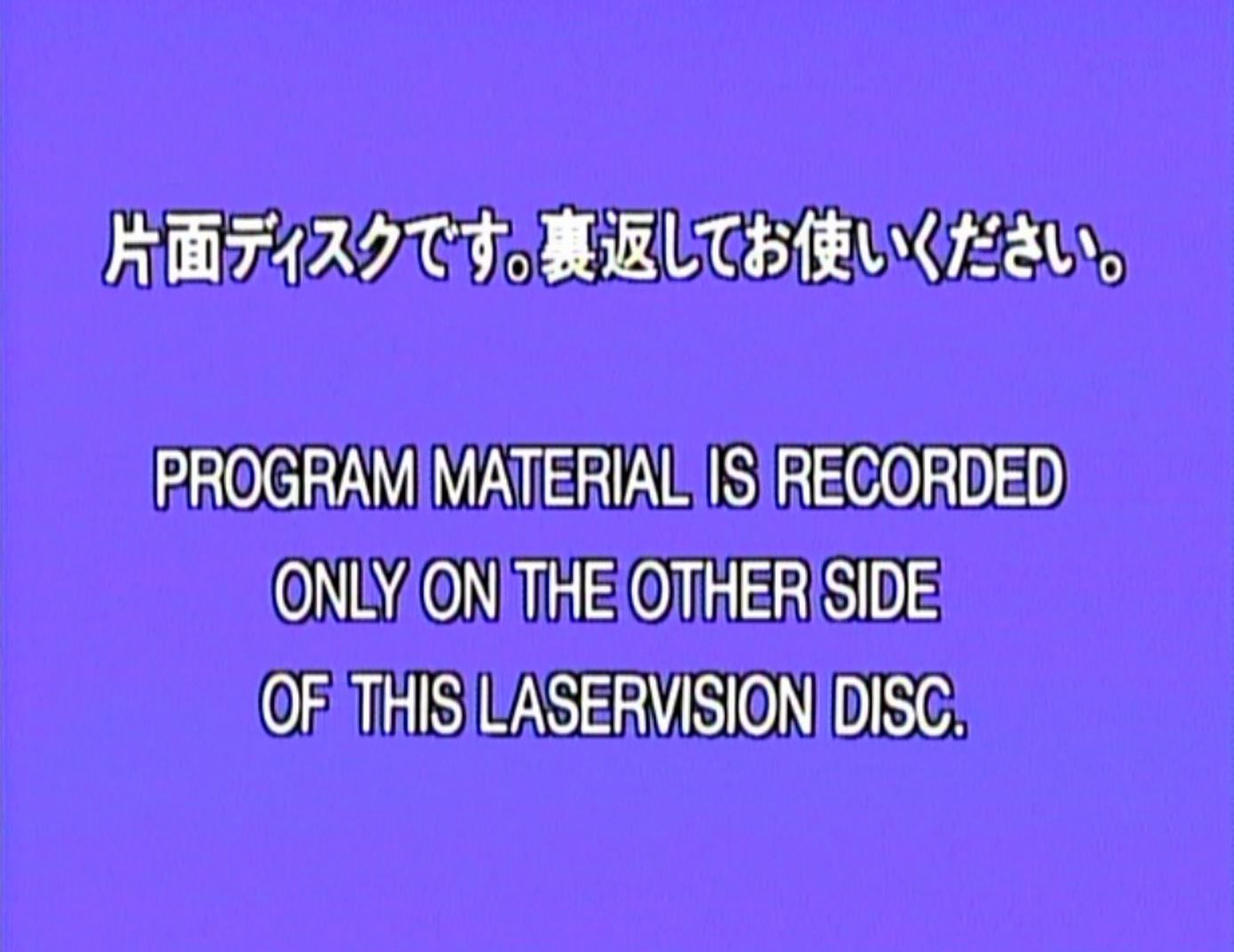
What was produced on laser discs?
The idea of a “failure” of the format should not be interpreted as the absence of a large assortment of films. The release database is collected on the site LDDB.com, which itself is a historical artifact. There are more than 60 thousand titles, including, however, different versions and re-releases of the same film. When I picked up the very first batch of laser discs, along with the turntable, I realized that it was a suitable collectible. Most of all I was fond of cinema in the nineties, at the time of video distribution, when I was in school and had a lot of free time. Action films, science fiction and thrillers of the last two decades of the twentieth century - this is my topic: even to put it mildly, not brilliant films of those times have nostalgic value for me. LD itself serves as a kind of filter: with the cost of disks from 15 to 100 dollars, they rarely bought rubbish.
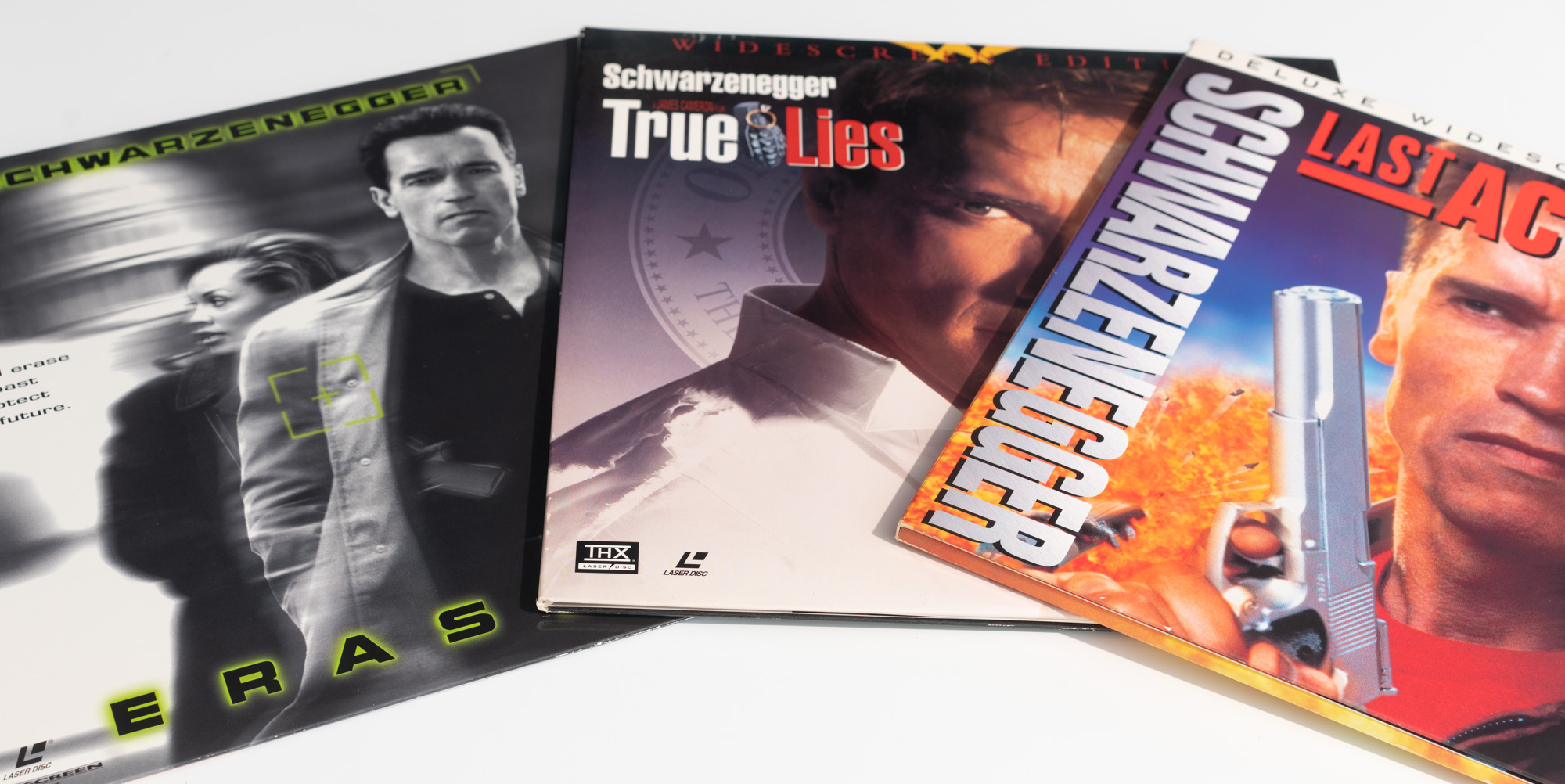
In short, on the first try I got a collection of films from my youth: Robocop, Terminator 1 and 2, Back to the Future, Indiana Jones, Kindergarten Cop. Slightly more serious "Scent of a Woman", "Scarface", "Forrest Gump". Well, the Titanic, of course. What are the nineties without the Titanic?
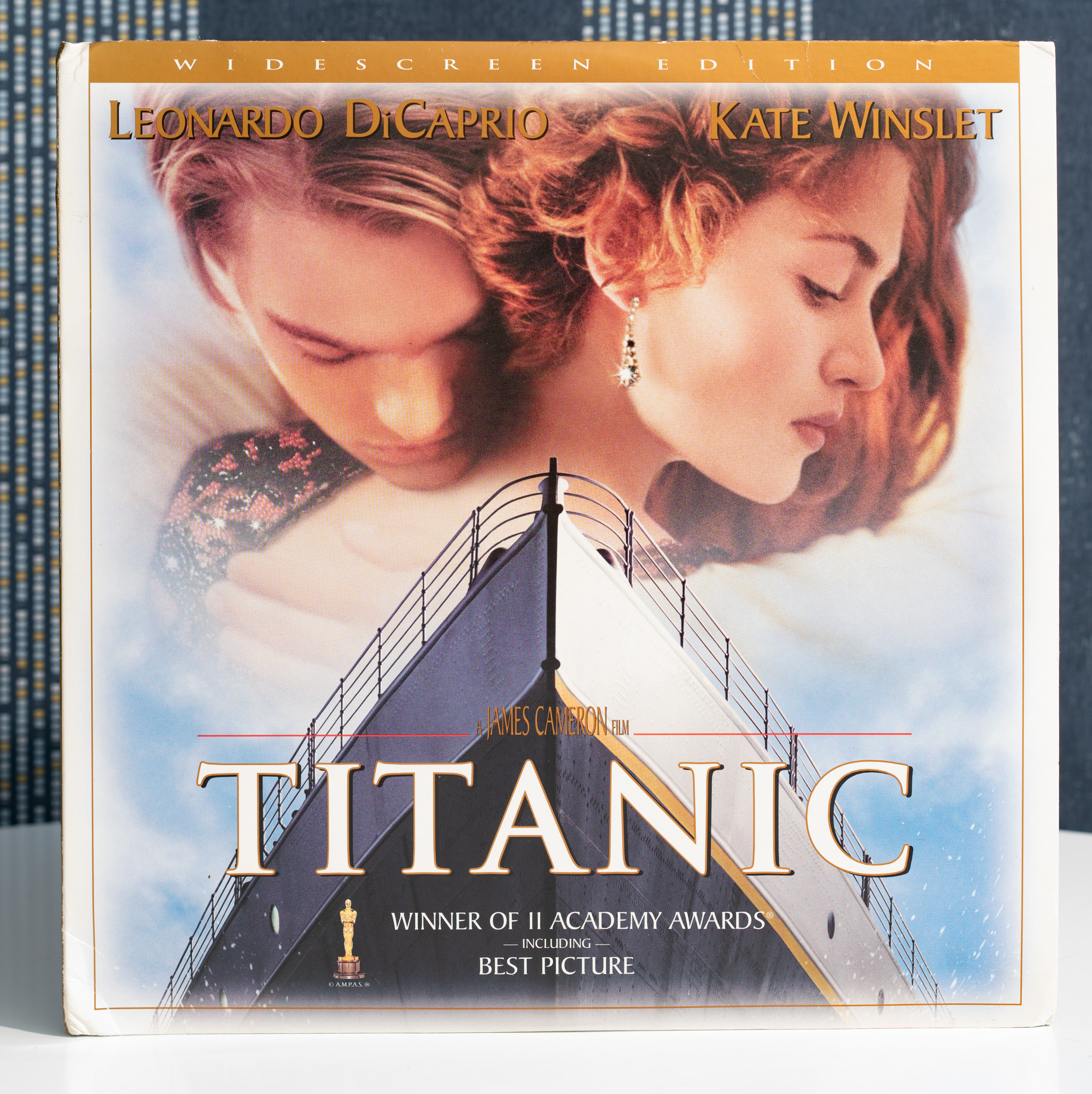
Thrash, but no less wonderful action movie "Total Recall" by Paul Verhoeven should be looked exactly like this: either on a laser disc or on a videotape. No re-releases on Blu-Ray, too much definition. At the same time, almost all discs in my collection are with digital stereo sound, and my requirements for the audio track are higher than for the image. I will use three screenshots to indicate the quality of LD in comparison with videotape and Blu-Ray using the example of the Terminator.
VHS:
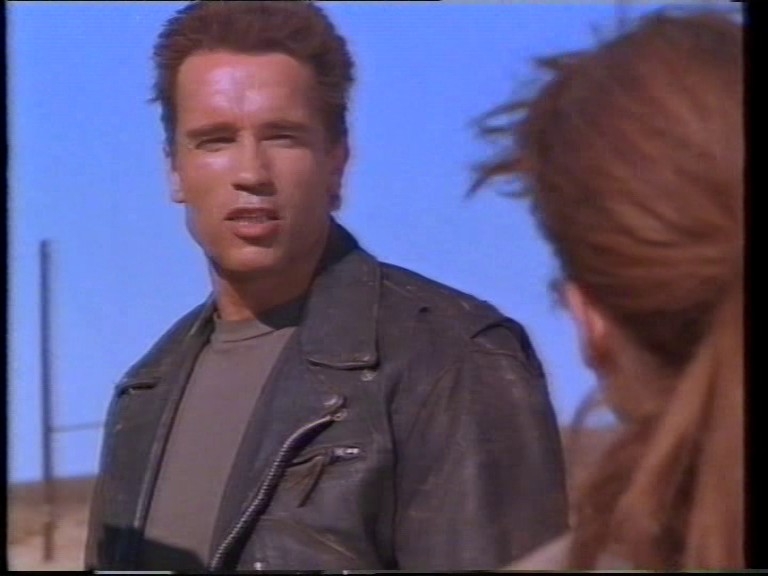
Laser Disc:
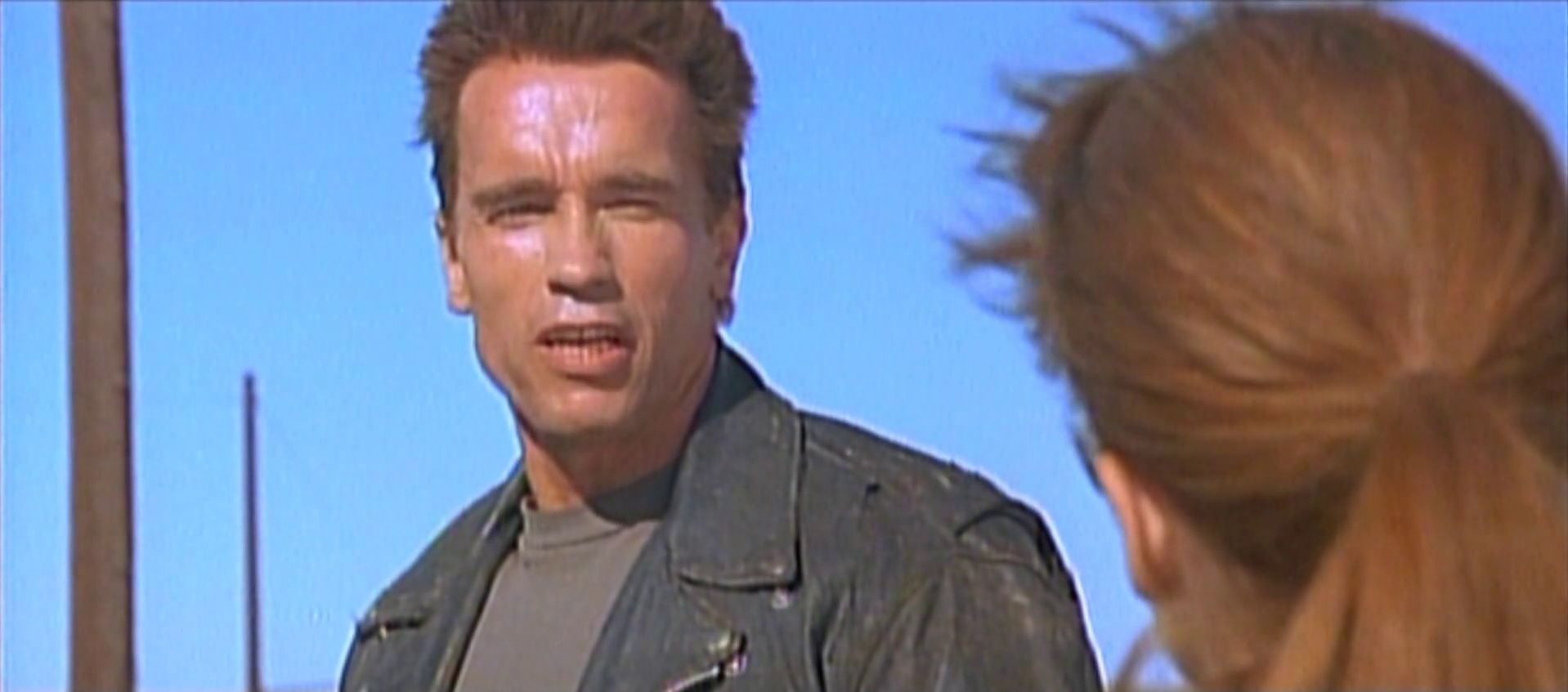
Blu-Ray:

The resolution of a laser disc is noticeably higher than that of a videotape. The analog nature of the media is produced by noise in the dark areas of the frame, and occasionally skipping artifacts, a consequence of reading errors - there is no correction, there is nothing to correct them.
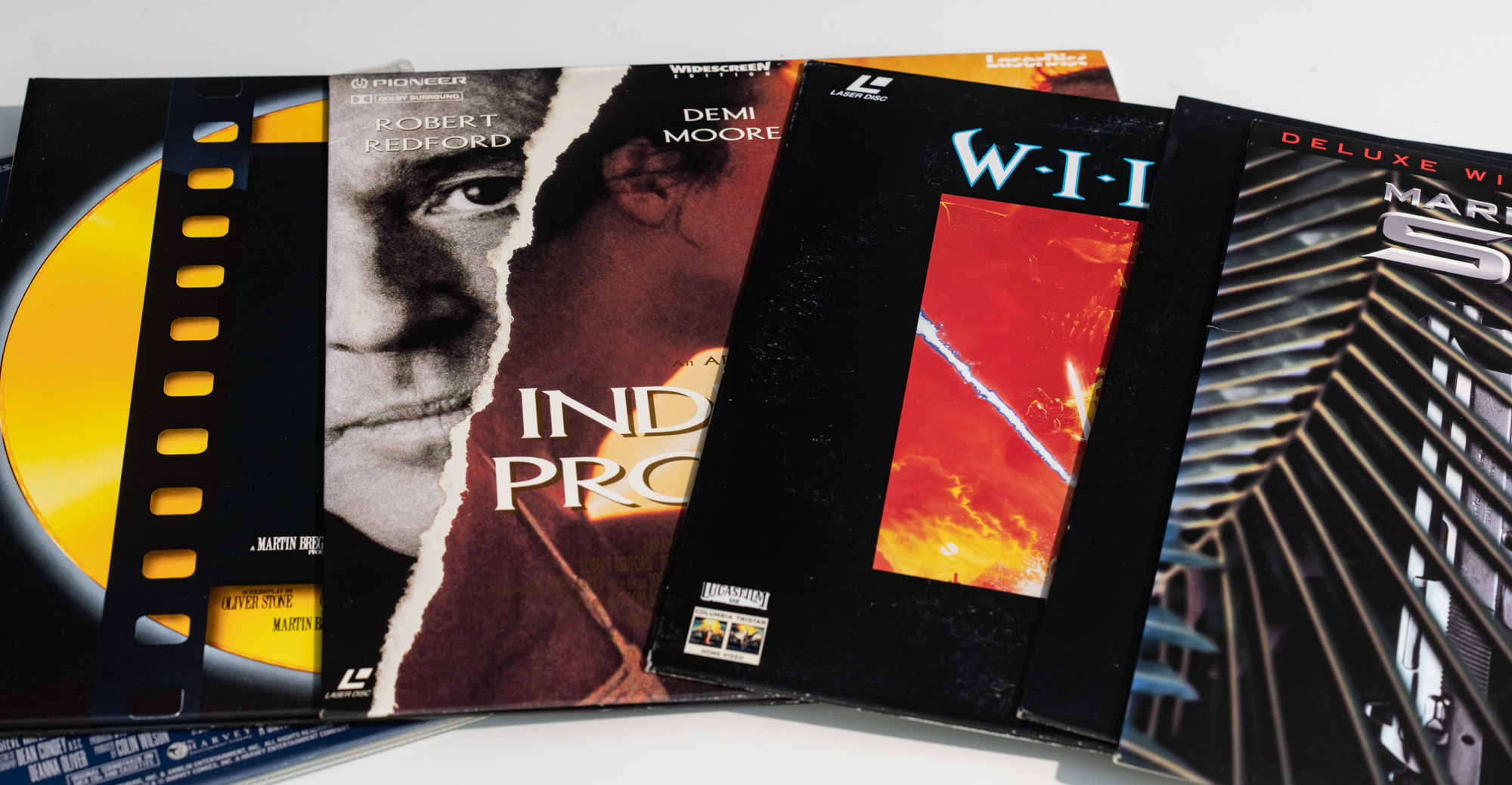
It can be said that almost all outstanding films from the 1920s to the 1970s, and almost all releases from the 80s and 90s, are available on LD. Not all, however, are equally easy to find.
Collectible value
According to their historical value, discs are divided into "regular releases" - as a rule, it is a film on one disc, in CLV format, a simple envelope:
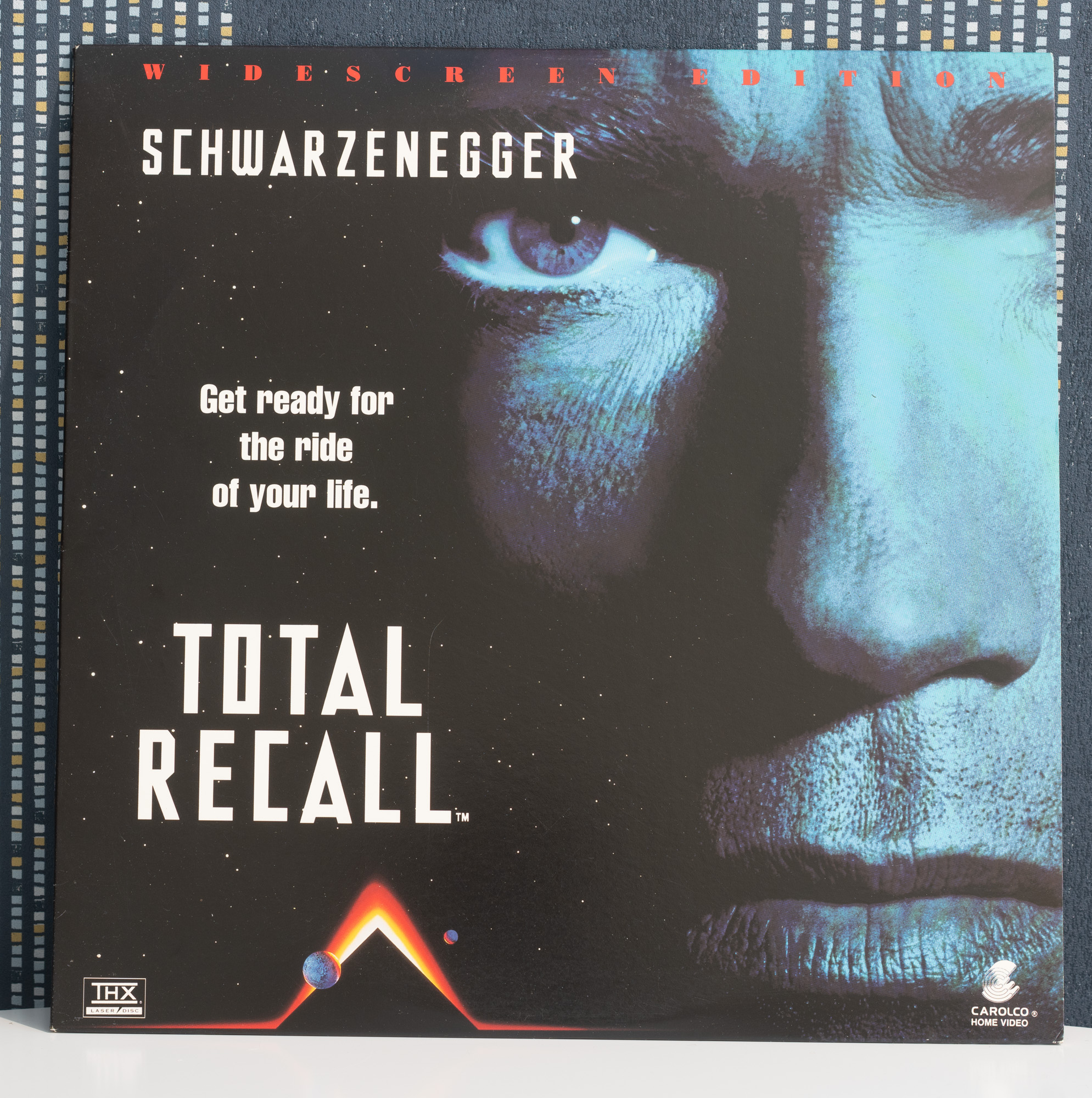
"Special releases" are a little more expensive: late editions with a multichannel track, director's cut and so on.
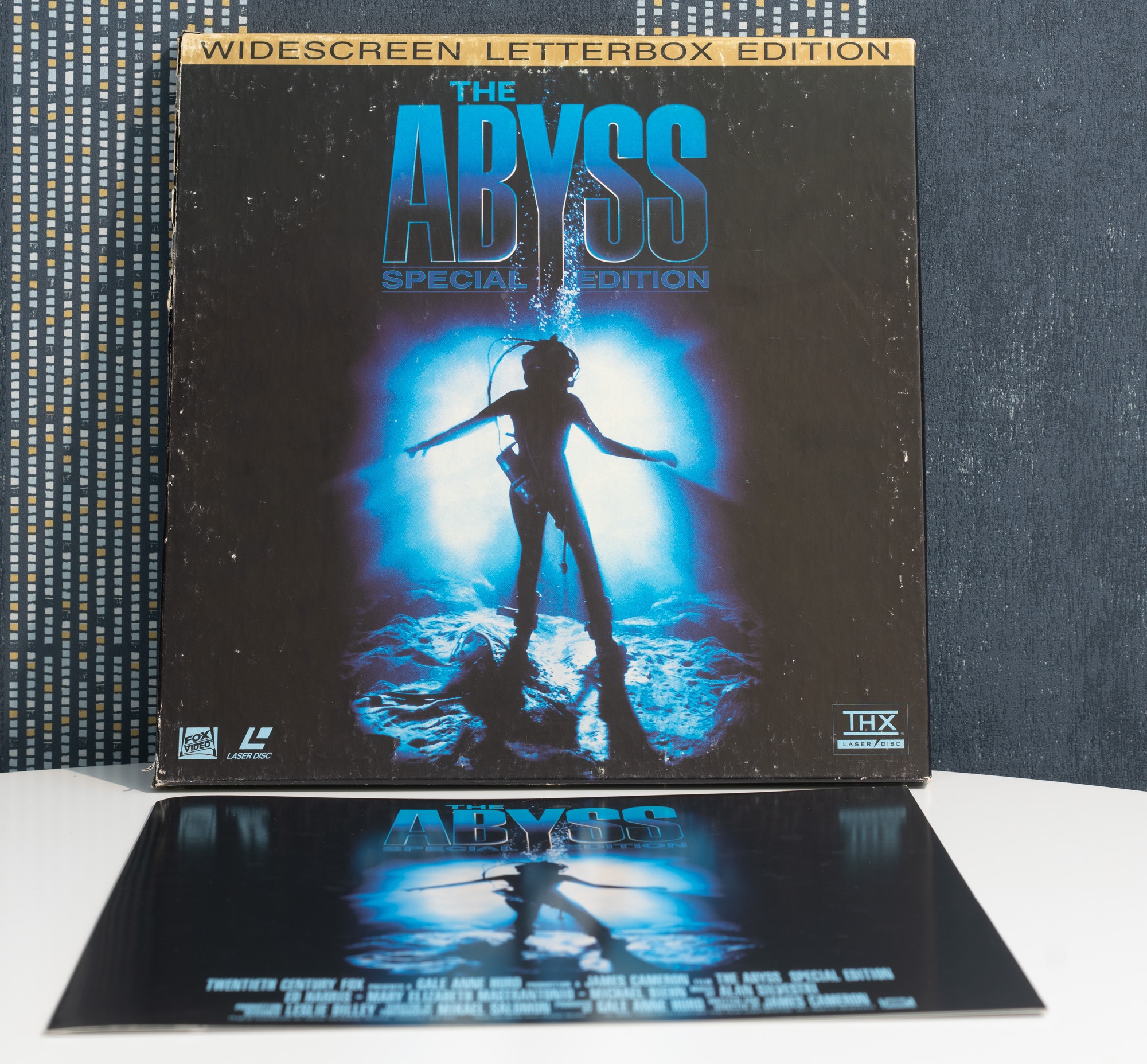
Unlike VHS, large format films on LD are the norm rather than the exception, although the cheapest discs crop to a 4: 3 TV aspect ratio. Such publications necessarily warn the user: "there are stripes above and below" so as not to complain.
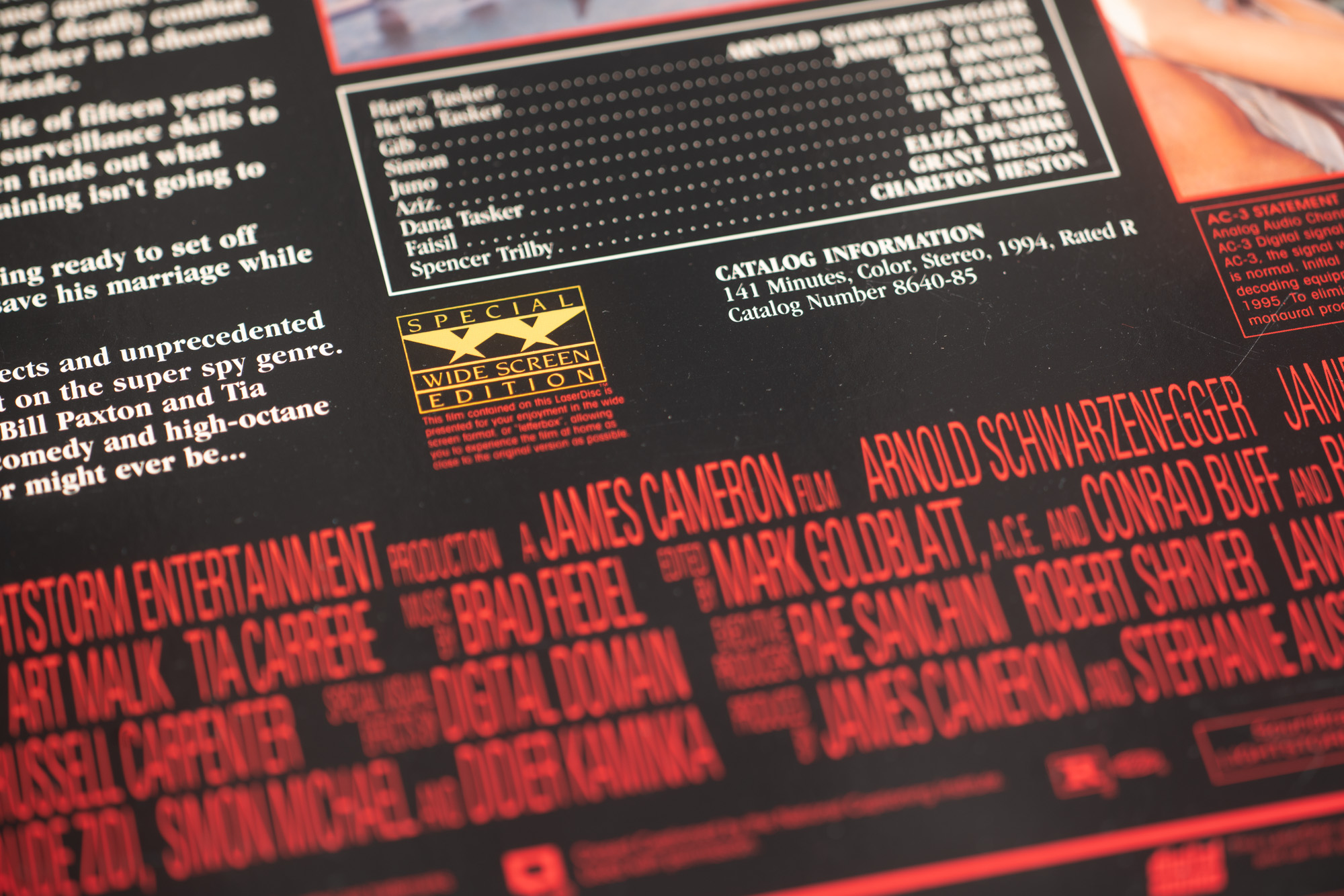
This is followed by limited editions, I will show a couple of versions on the example of "Terminator 2". Here's a simpler director's cut in a cardboard box. Four discs, three - a film, and the fourth - a documentary about the shooting.
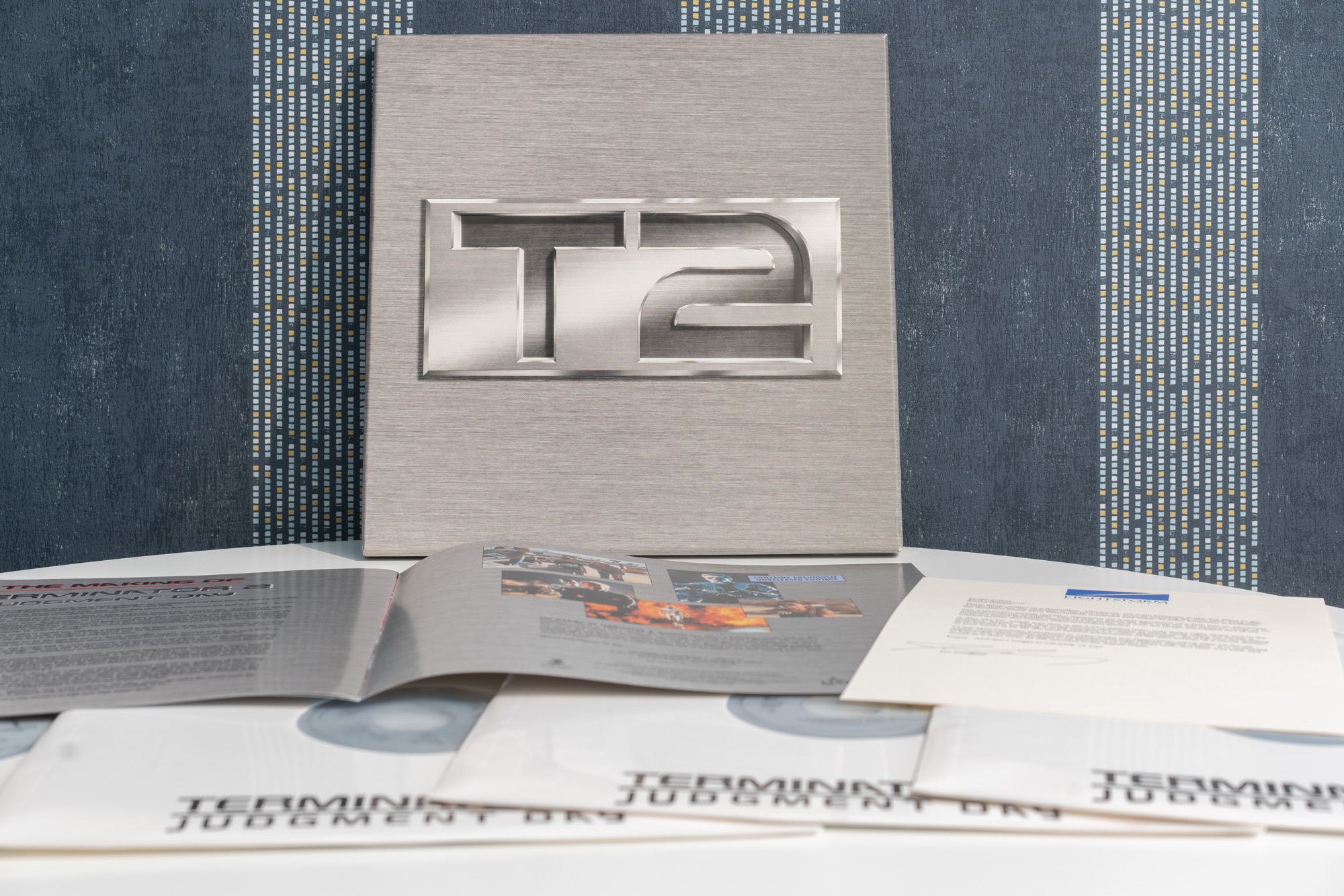
And this is a completely elite edition: leather binding, each of the three discs in its own glossy sleeve. Although visually this edition is more expensive, in fact the film fit on two discs in CLV format (without the possibility of frame-by-frame viewing).
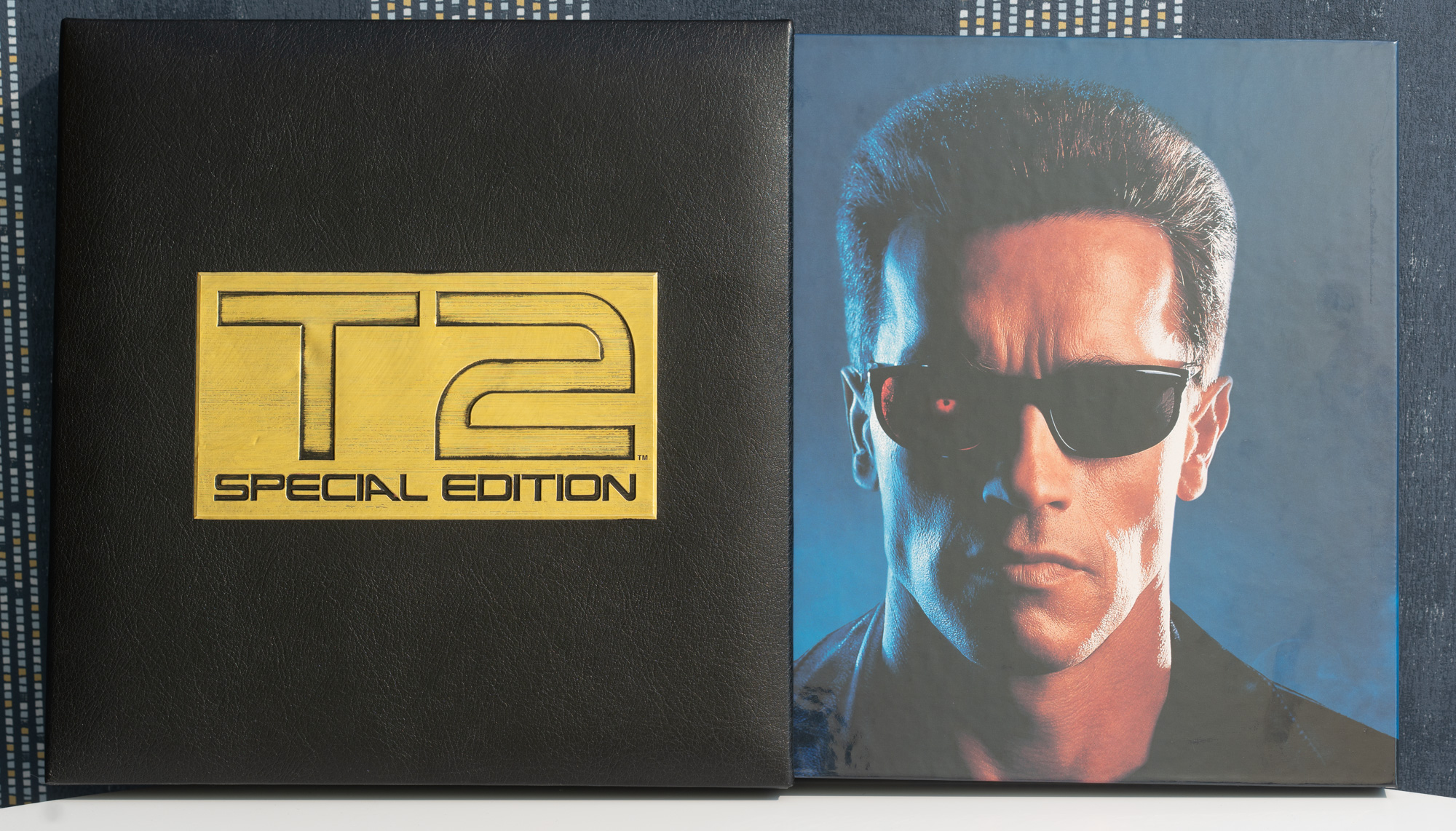
Here is an advertisement for leather jackets a la Terminator from there:
Even more expensive are either specialized editions (eg, Hi-Vision high-definition LD), or simply rare or coveted films. The least appreciated are the cheap European editions, often accompanied by subtitles:
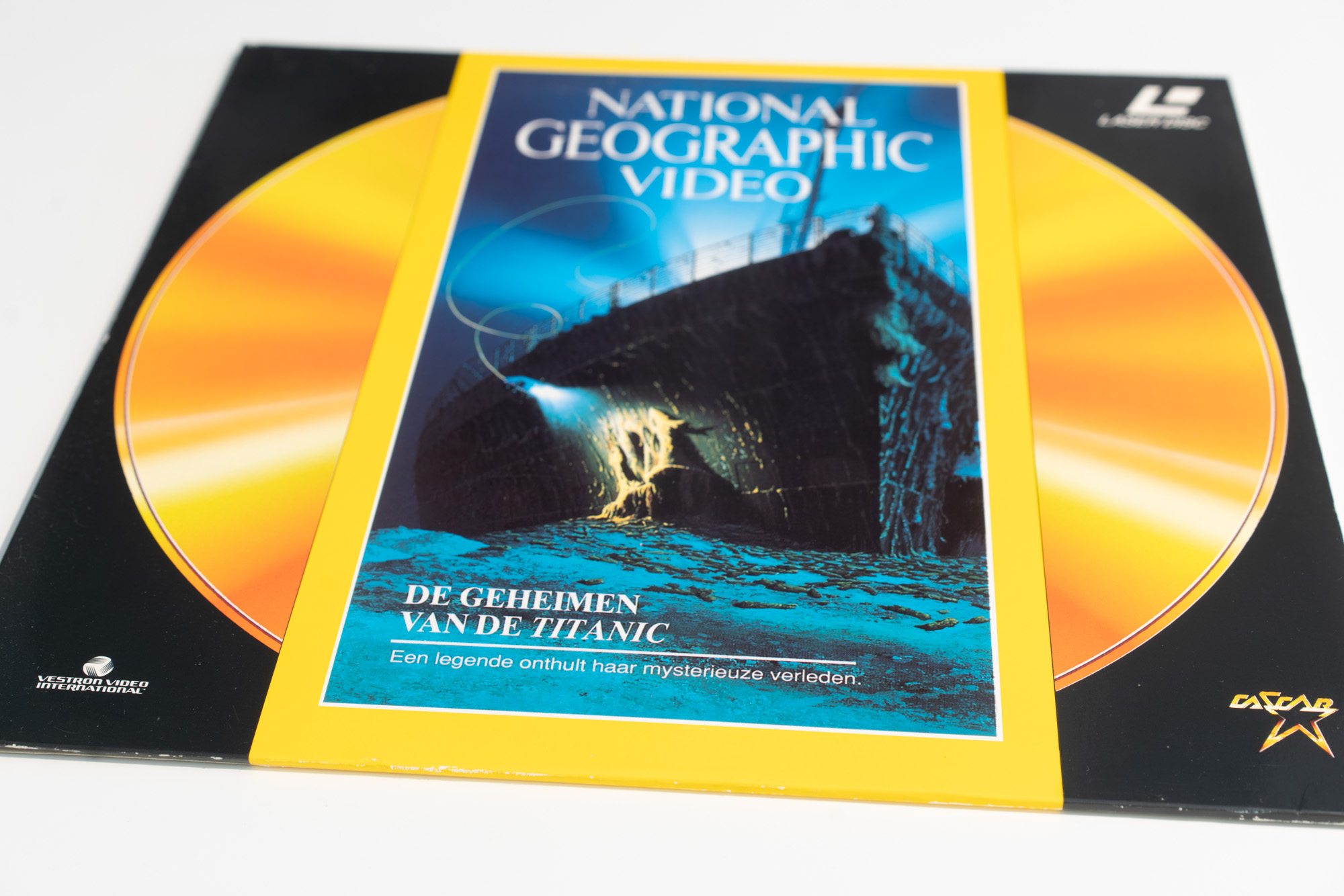
Speaking of subtitles. Films released in Japan tend to be expensive. It should be borne in mind about them that Japanese subtitles are tightly embedded in the video and do not turn off. For obvious reasons, Russian dubbing is not available in principle, and I wonder how collectors of laser discs in the USSR and the post-Soviet space solved this problem? Perhaps my favorite minidisk could help here, due to random access and synchronization: we start video playback and simultaneously with it - dubbing on the minidisk.
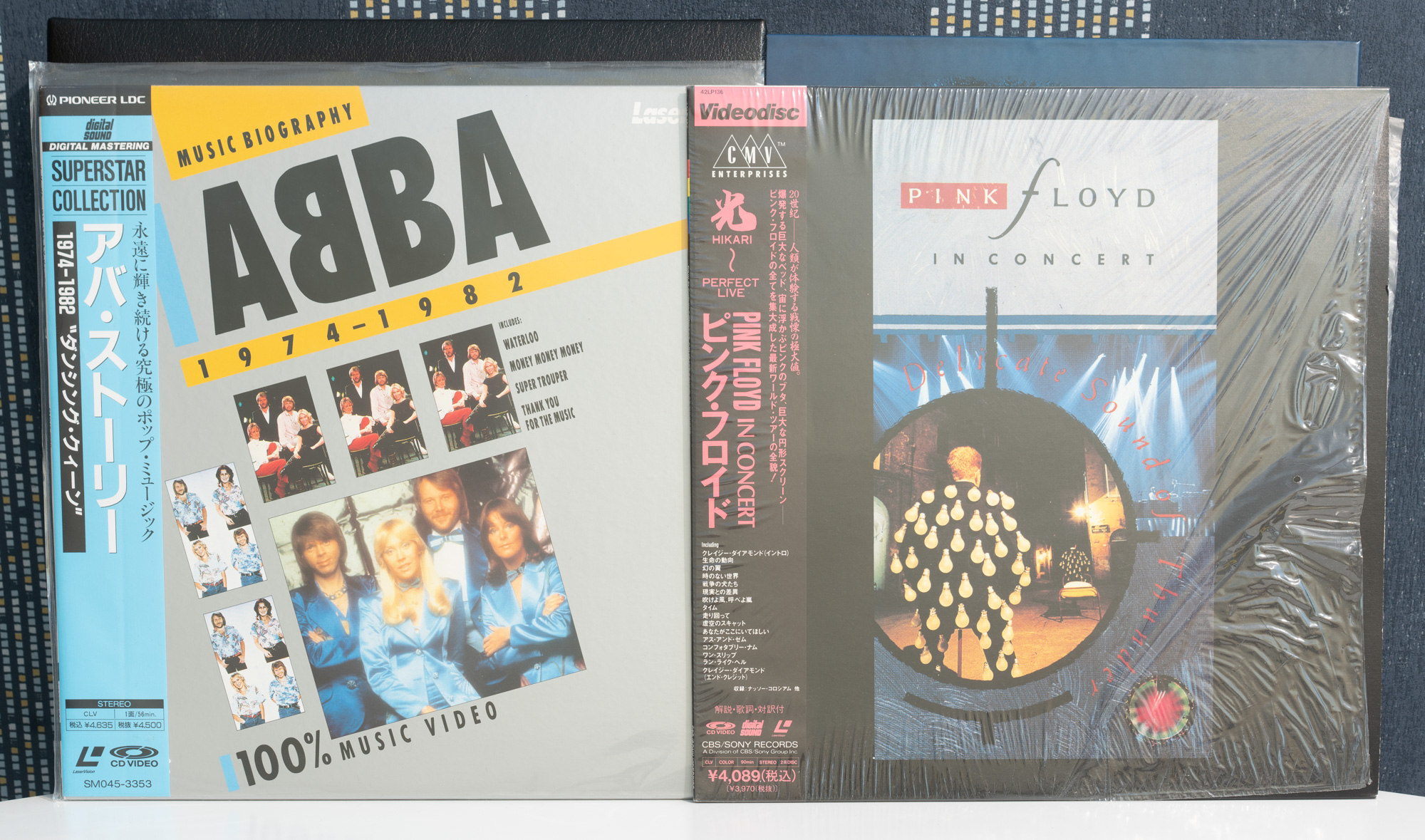
There are very few "Russian" publications. There are Japanese and American releases of "Stalker" and "Solaris" by Tarkovsky, "Ivan the Terrible" by Sergei Eisenstein. In this article on Habré with a detailed description of the “Soviet” history of LD, two localized editions with music and a video tour of the museum are mentioned. The only conventionally Russian laser disc in my collection is the "Time Machine" concert produced in France:
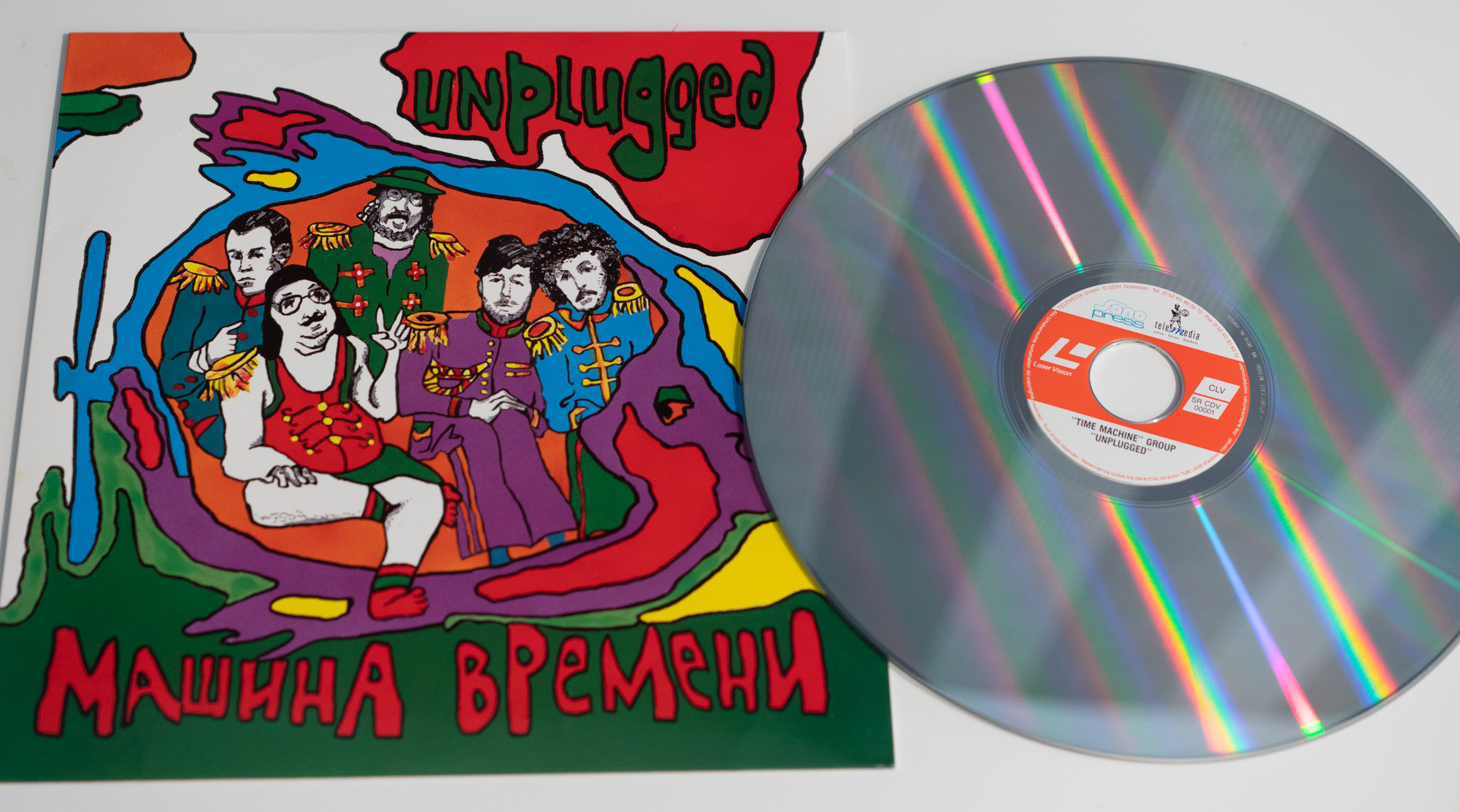
CLV and CAV
Two ways of recording video data to a laser disc directly affect the user experience. CAV, or Constant Angular Velocity, involves rotating the disc at a constant speed. CLV - Constant Linear Velocity - Closer to
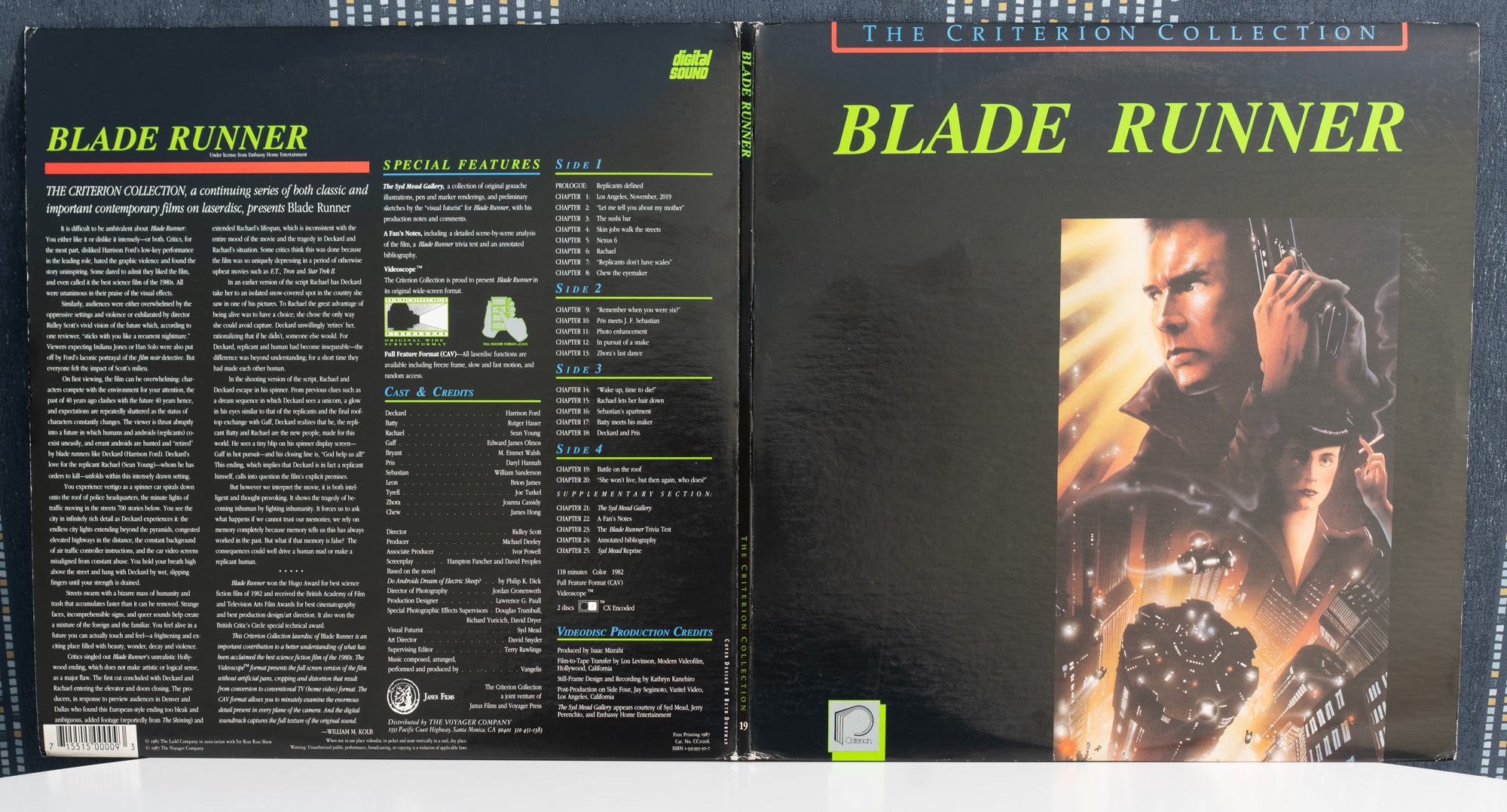
What are good (or bad, depends on the film) editions on LD - they often distilled the theatrical version of the film without any changes. In the case of Blade Runner, this is more a minus than a plus: this LD is a version of the film with boring voiceover, read by Harrison Ford. As a fan of this movie, it was interesting for me to watch her too. Since the film was released in CAV format, you can always stop playback to view a frame or a sequence of frames with slow scrolling - this is a standard feature of the player.
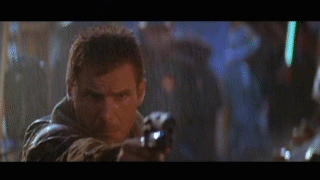
In supplementary materials, CAV is essentially used for storing data. On the last side of the second disc, images and text are recorded frame by frame, along which you can move, switching frames sequentially. A mark is recorded on the disc, due to which playback is paused at the beginning of such a section. This is how it looks in the materials for the Terminator:
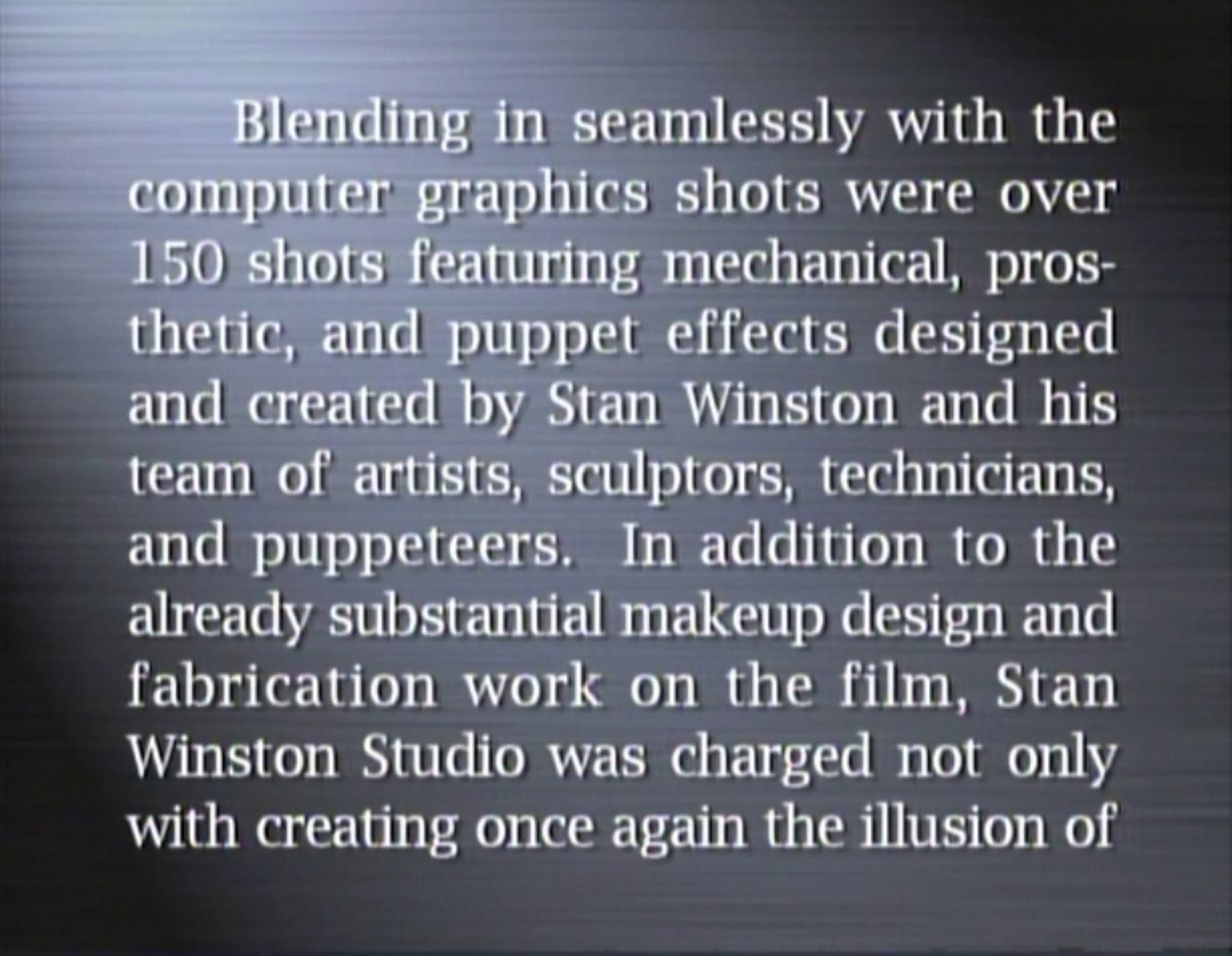
Prior to the mass distribution of multimedia CD-ROMs, laser disc was the only or one of the few formats that allowed random access to audiovisual information. Due to this, the format was used to a limited extent in conjunction with a computer. For moviegoers, CAV is an opportunity to study your favorite movie in detail and share with friends comments like “have you seen that a movie camera is in the frame on frame 18465?”.
Laser Rot
Laser Rot is the degradation of the adhesive that holds the two sides of the laser disc together. Due to non-compliance with the technology, air penetrates between the plastic pancakes and spoils the reflective layer, which leads to errors or complete inability to read. Apparently, this is a typical childhood illness: Laser Rot discs are most often found among early editions (late 70s, early 80s). I have mostly late editions in my collection, and the only disc with Laser Rot is a collection of video clips from 1984, where the outer edge is spoiled:
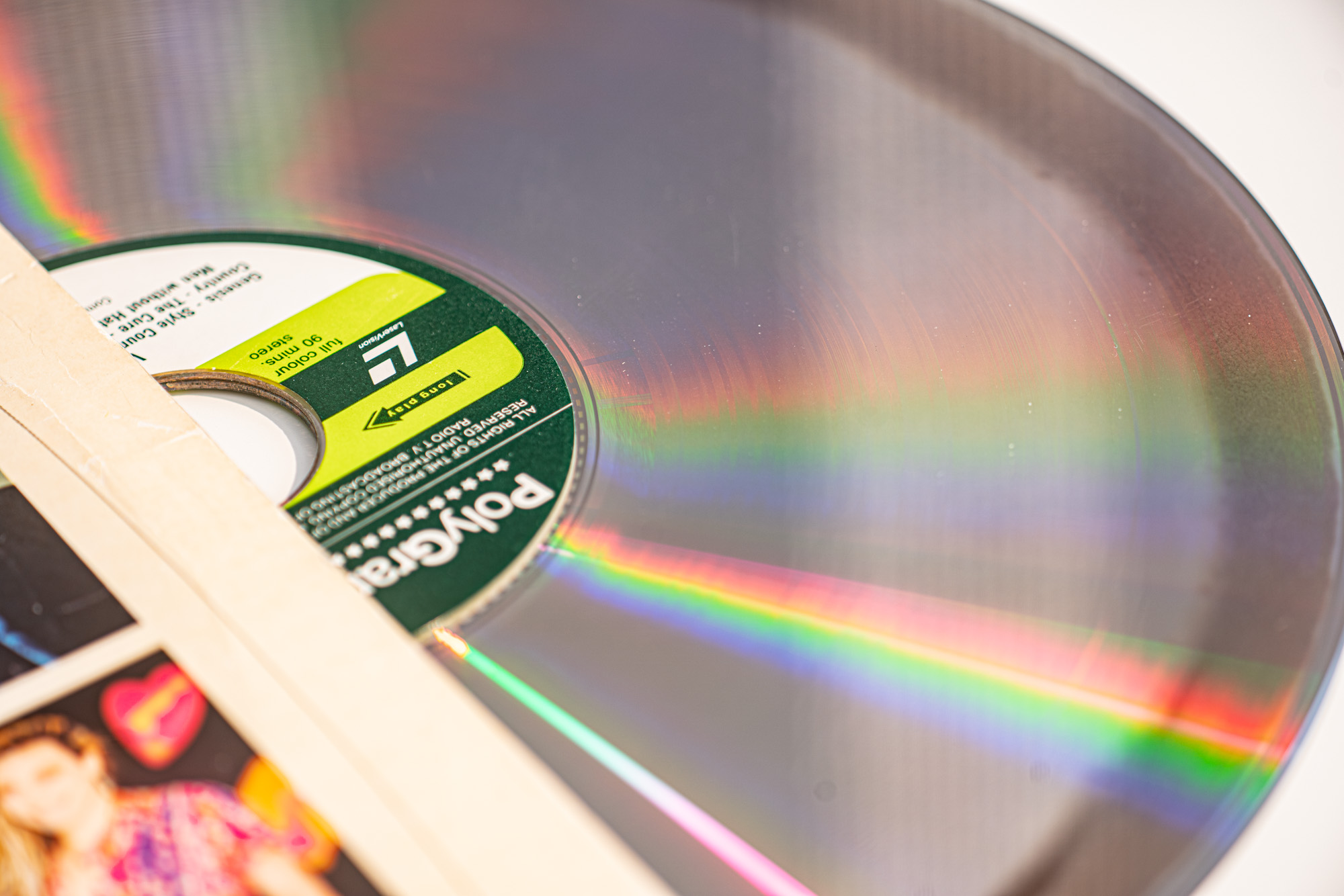
This is how a damaged disc is played:
By the way, check out the quality of the video clip on this LD:
This is a modern re-release of the clip in 4K, and here is a frame from it from a laser disc:
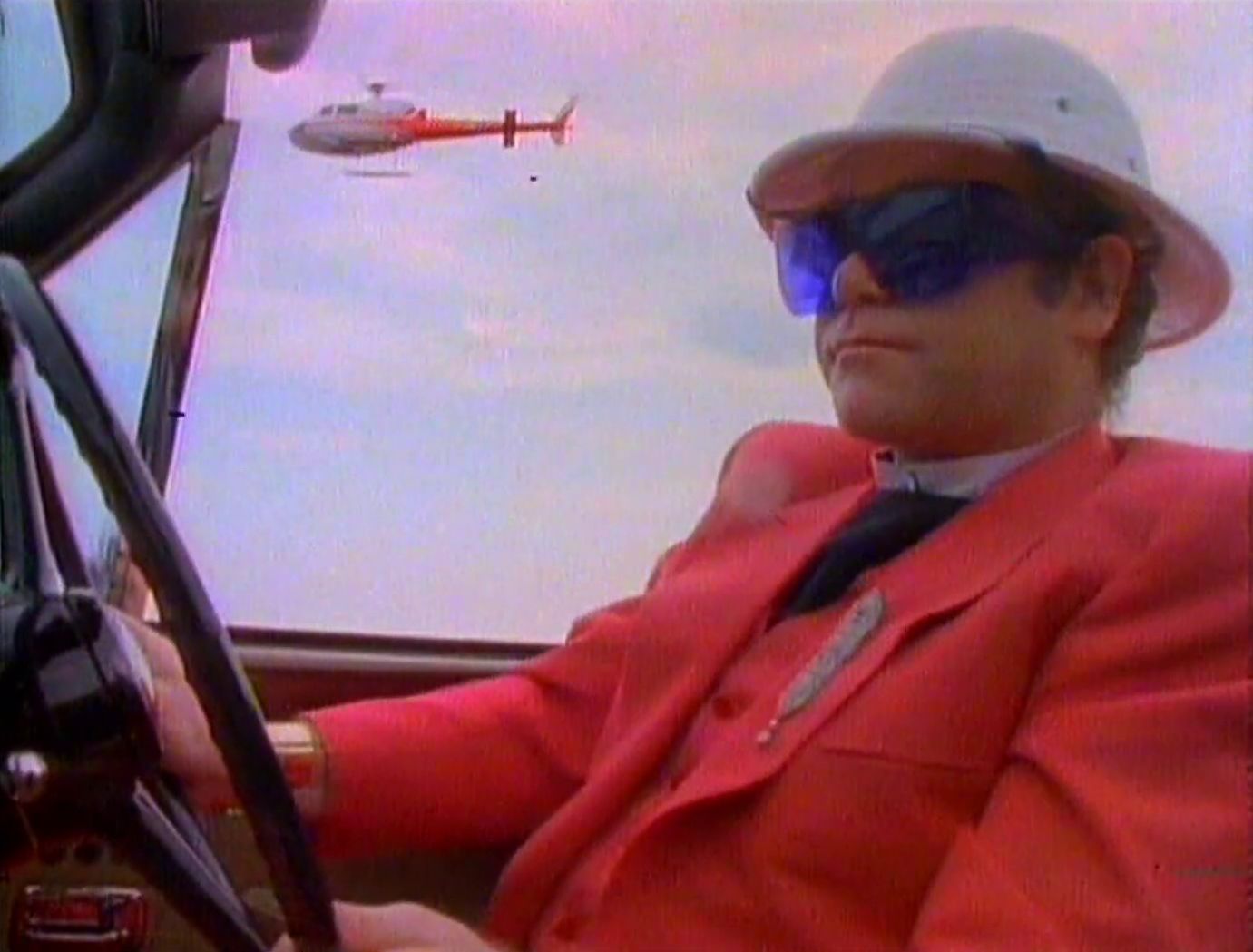
Here's what I want to show: modern re-releases of films in FullHD and 4K are the result of the use of very sophisticated technologies for scanning film, which made it possible to pull out all the details stored on it. But when it comes to a lower quality source, including this video clip by Elton John, upscale and noise cleaning give some result, but the difference between it and a 36-year-old laser disc is not fundamental. It is difficult to look at a laser disc on modern TV - soapy, a lot of noise. On a retro CRT TV, the difference between LD and DVD is noticeable, but not catastrophic. In the context of its era, the laser disk was incredibly good. As is often the case, the mass audience paid in rubles for convenience, not quality.
Khan shot first
One of the most valuable pieces in my collection is the 1993 laser disc edition of the original Star Wars trilogy (Episodes 4, 5 and 6), The Definitive Collection . Another reissue of the trilogy on LD took place in 1997, but the later box set is much cheaper than the earlier one. The fact is that in 1997 director George Lucas "improved" all three episodes, removing some of the plots, adding new ones and providing the existing ones with more advanced computer graphics.
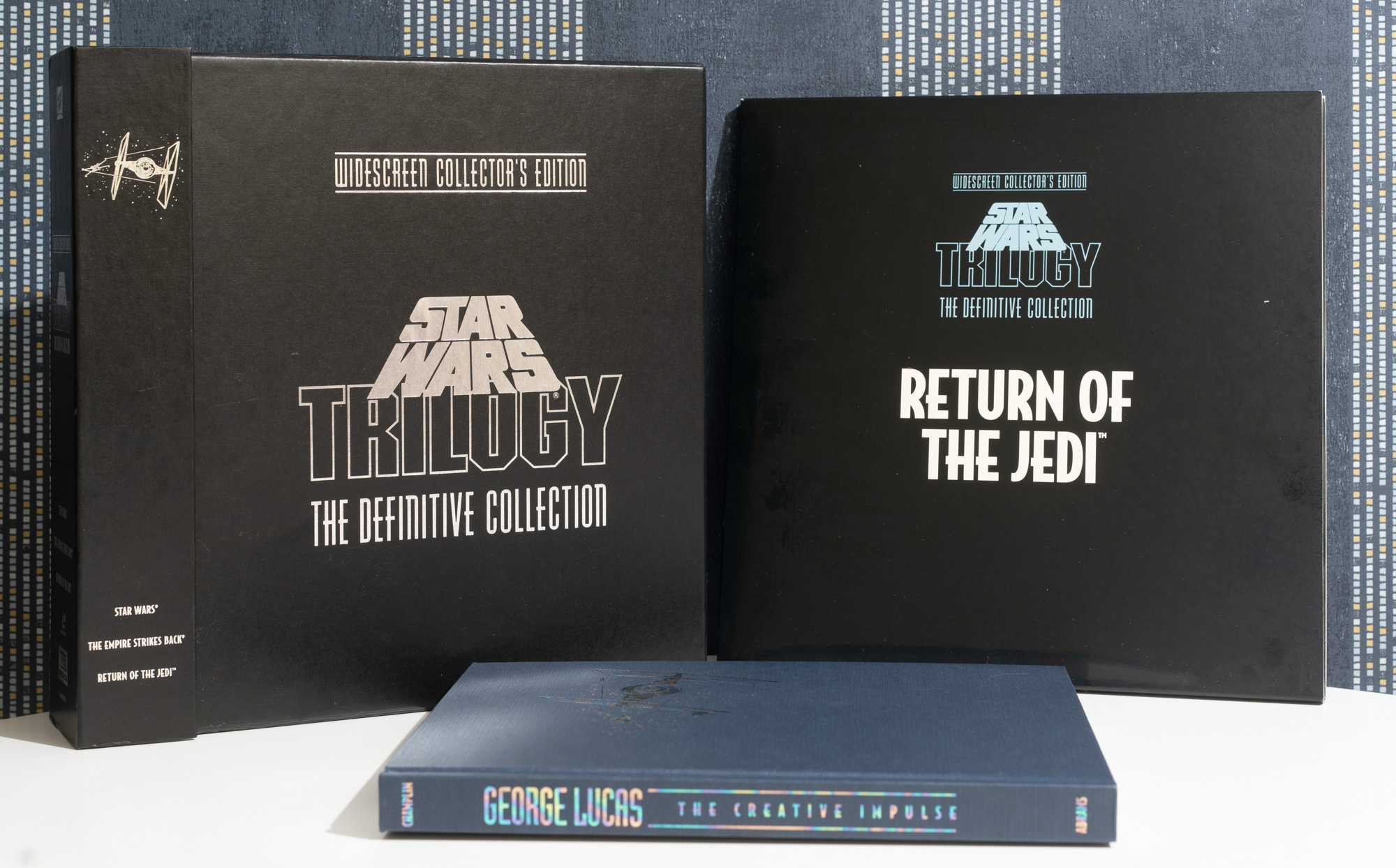
Including the most anecdotal change: in the theatrical version of the fourth episode, Han Solo, in negotiations with the bounty hunter, Greedo ends the meeting with a shot from under the table , unprovoked. In the 1997 reissue (and subsequent), Han fires in response to Greedo's shot.
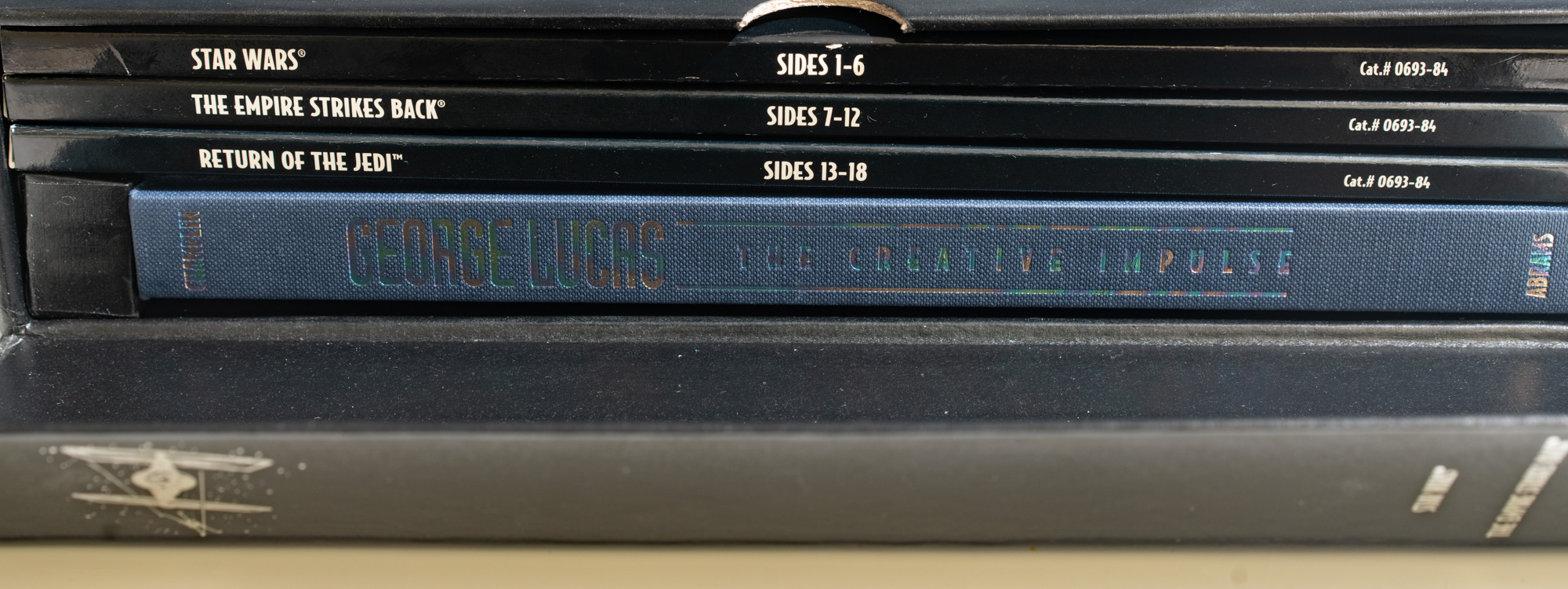
In a cult film, even such a minor (from the point of view of a non-fan) change generated a storm of comments (in the sense that we don't need to make Han Solo better than he is, we like him that way). In the 1993 edition of the Definitive Collection, Han is clearly the first to shoot. This can be seen thanks to frame-by-frame viewing - each movie takes three disks in CAV format.
Among other things, the laser disc gives an opportunity to touch the history of cinema. Do I have to buy a turntable and 12-inch plastic pancakes for this? Of course not: everything is available online. Although Lucas doesn't like the original trilogy, the digital source from which the Definitive Collection was "printed" was released on DVD in the early 2000s. An unofficial 4K copy of the theatrical release was made by fans, neatly scanned from several films.
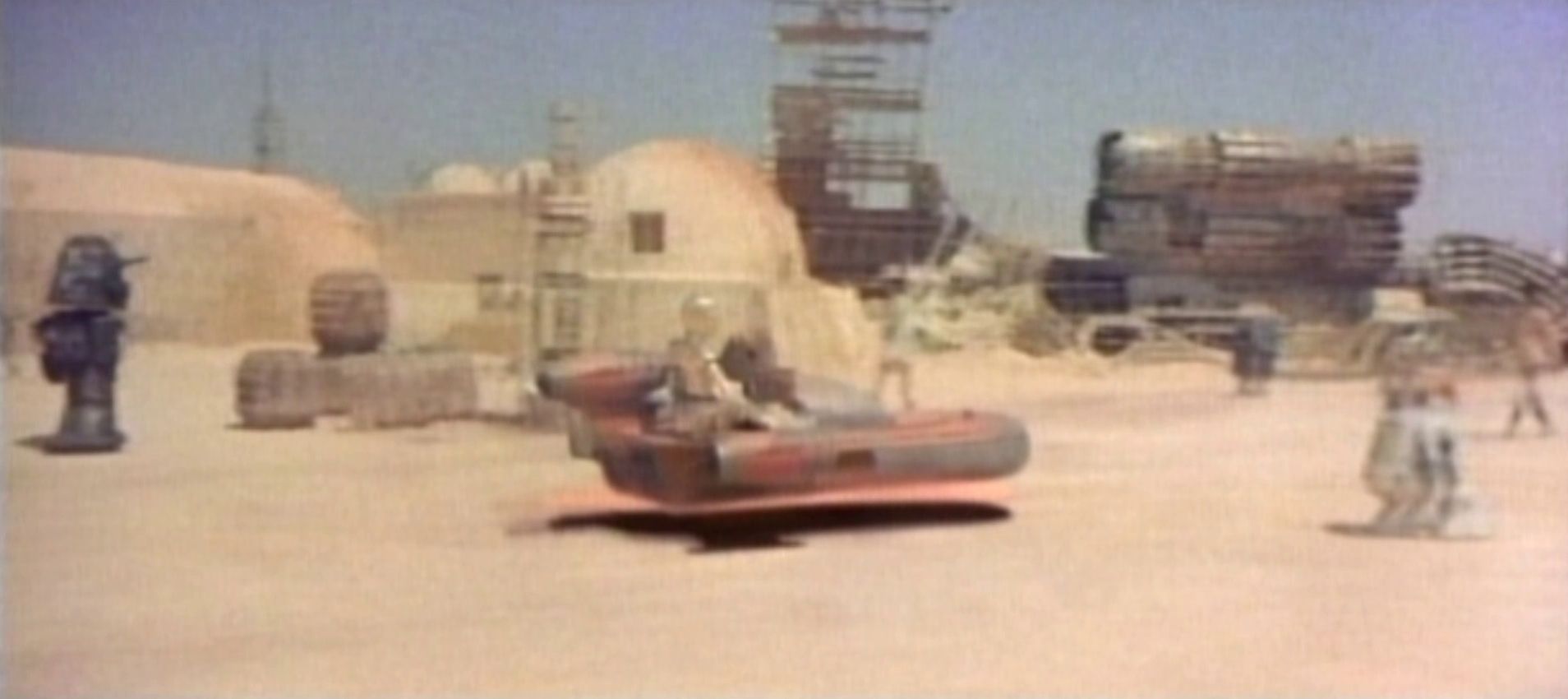
Therefore, the other argument that the LD edition is of the highest quality with no later changes does not work either. There is another feature here: for this release, a digital system was used that removes film artifacts, dust, scratches and the like. It works like this: two adjacent frames are compared, and if there is a scratch on one of them, it is replaced by information from the neighboring one. Naturally, the digital system of the early nineties was, to put it mildly, not ideal, which is why small objects in the background sometimes "lose their legs", as shown in the screenshot above.
Time capsule
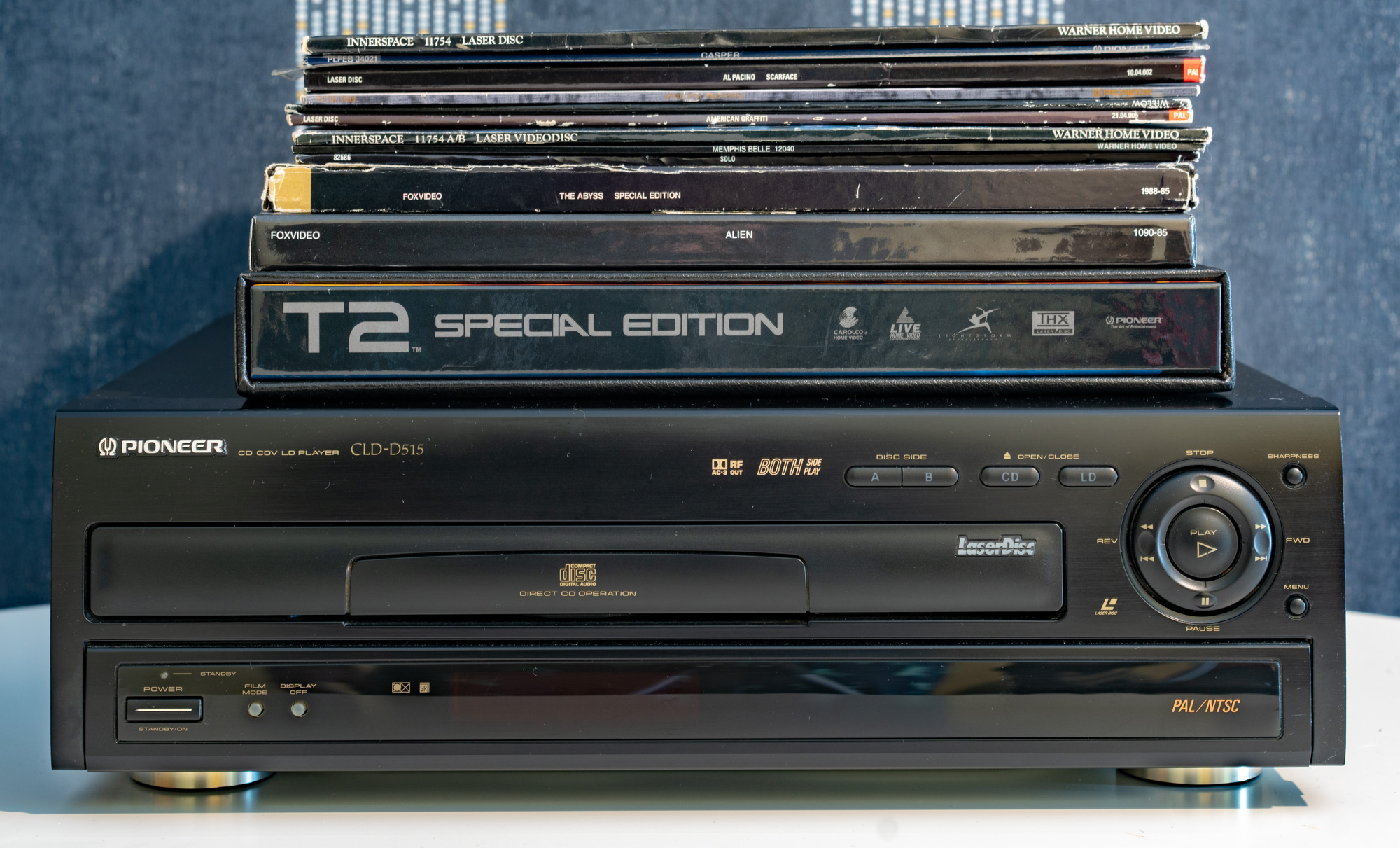
Unlike other retro formats that I am fond of, the laser disc is strictly for reading, not for writing. Recordable LDs existed, but it would cost several thousand dollars to reproduce the experience at home. The result will most likely be one disc with 30 minutes of video. The laser disc definitely has a collectible value: the assortment of films matches my preferences, the editions look beautiful on the shelf and are quite watchable on an old TV. Among other things, this is the only part of the retro hobby in which my wife participates: we now watch retro films in the evenings. Another time I will talk about the non-standard capabilities of a laser disk, and I want to end this material with a copy of another LD from 1990, which demonstrates breakthrough (at that time) computer graphics.The presence of such artifacts in my collection is very encouraging. And one more thing: unlike Netflix, which adds or removes films from the library at the request of the left leg, my films on LD are available at any time, without access to the Internet. As long as there is electricity and the laser has not sat down in the player.